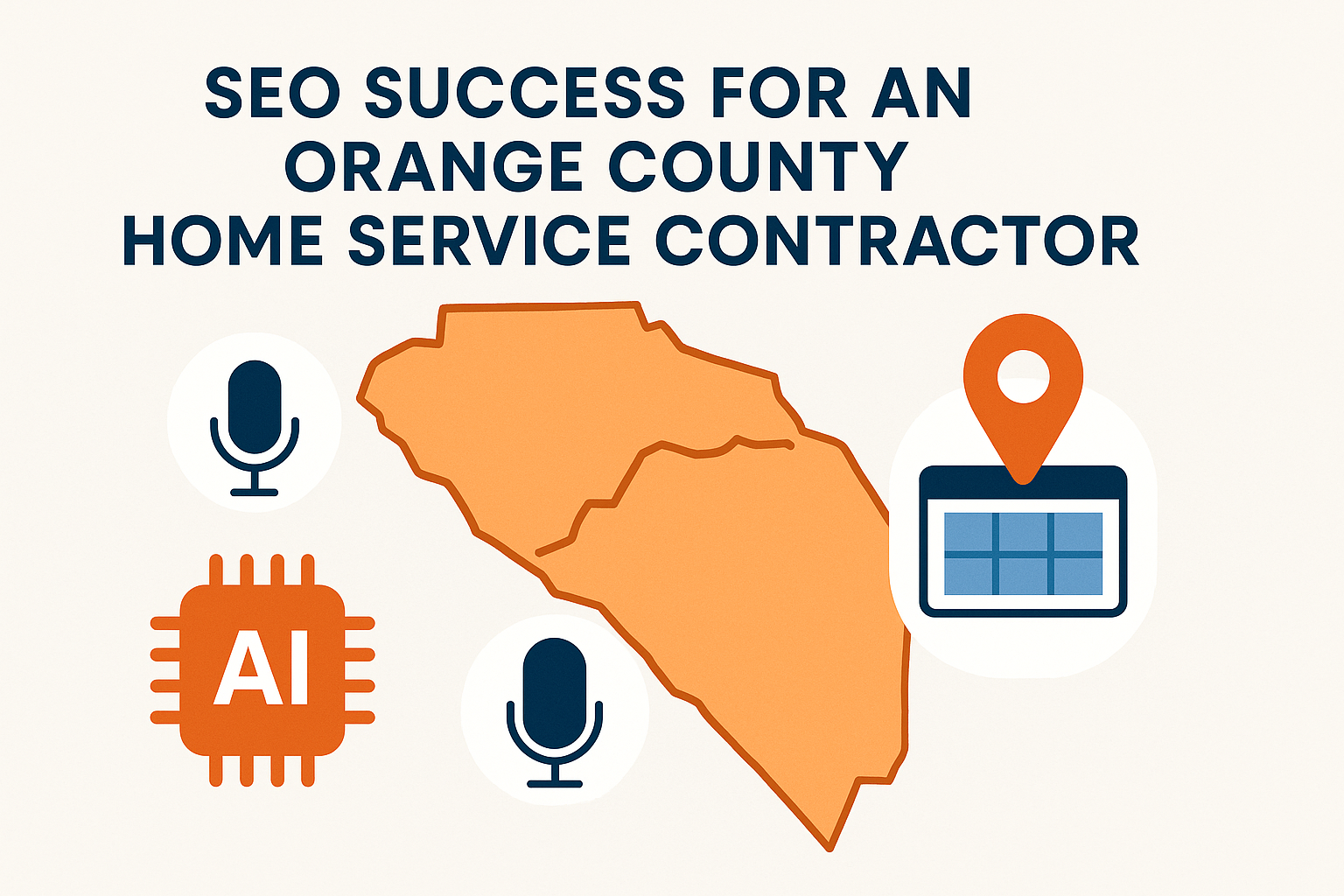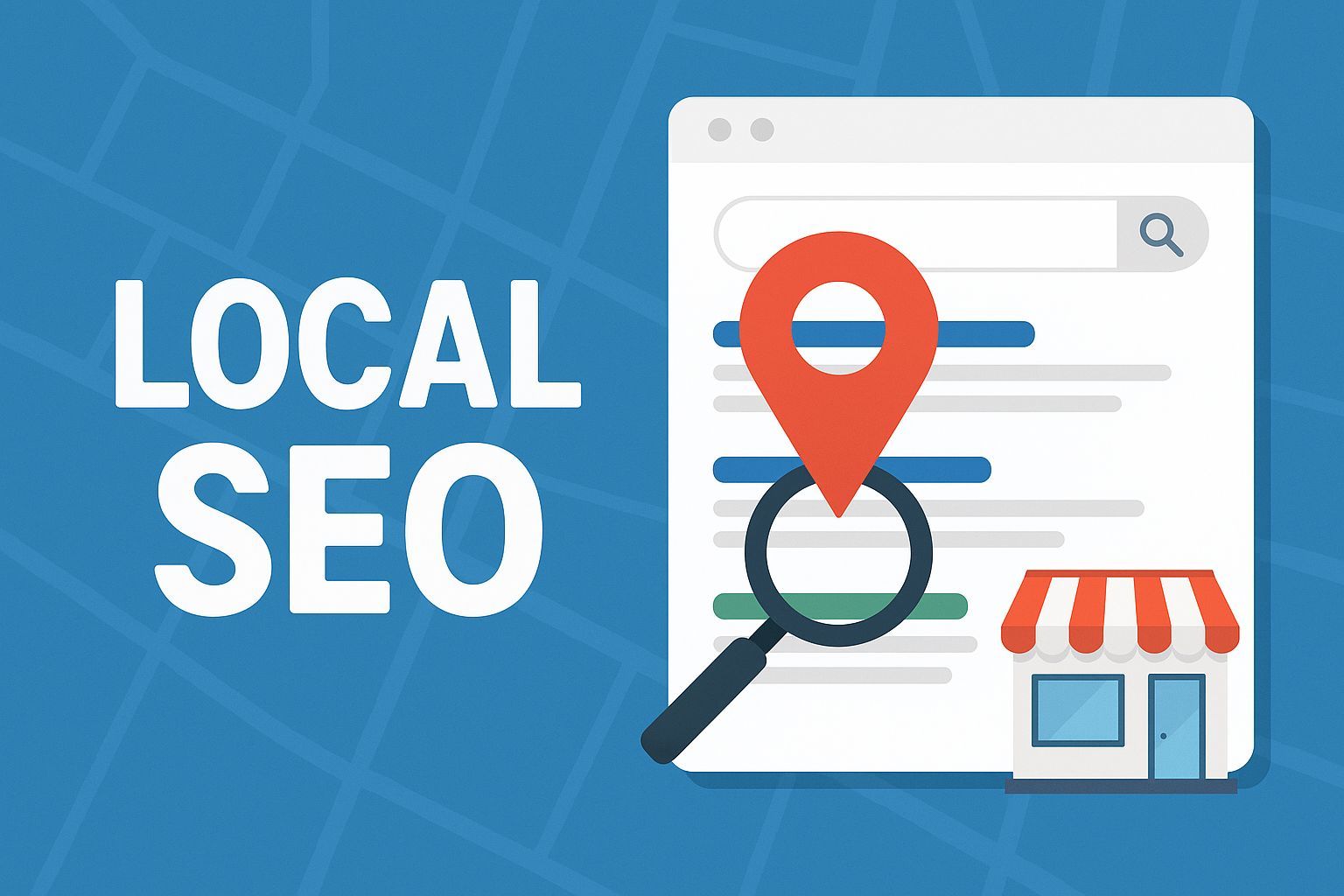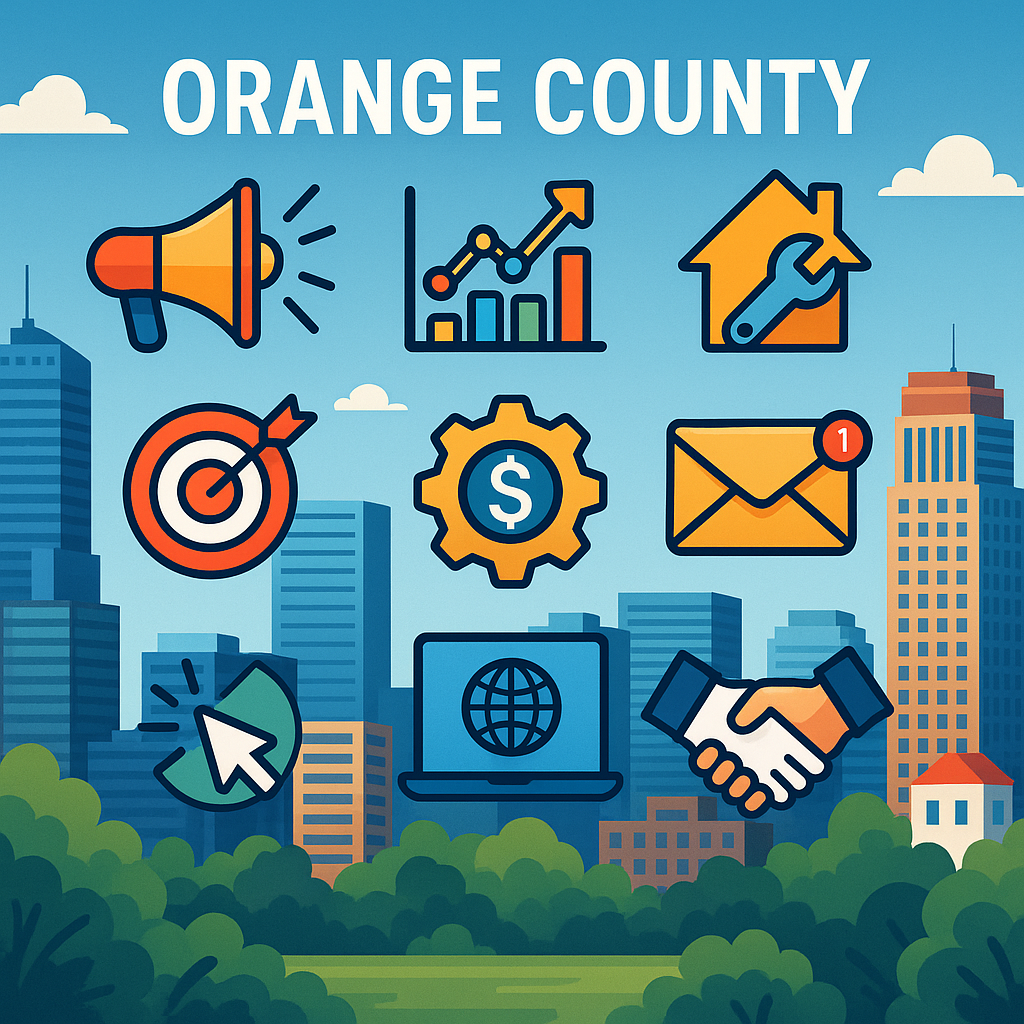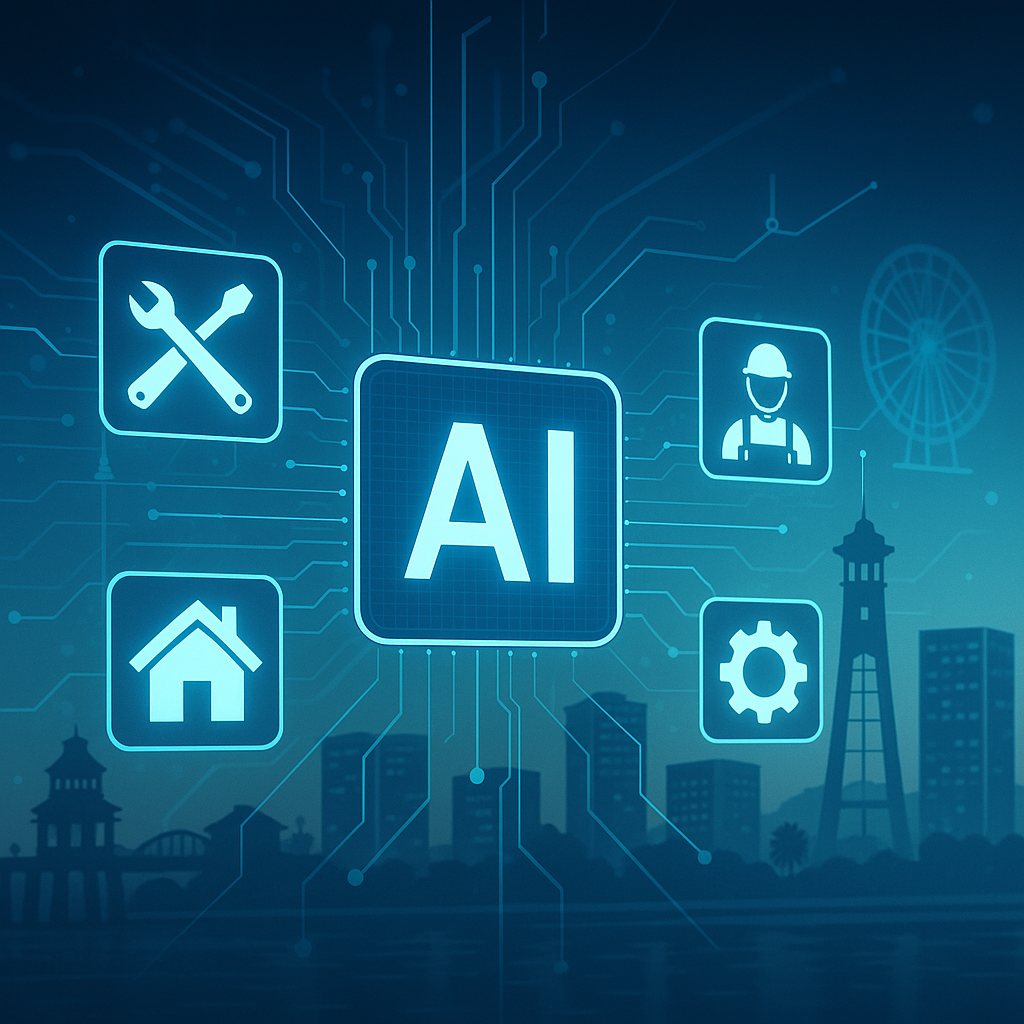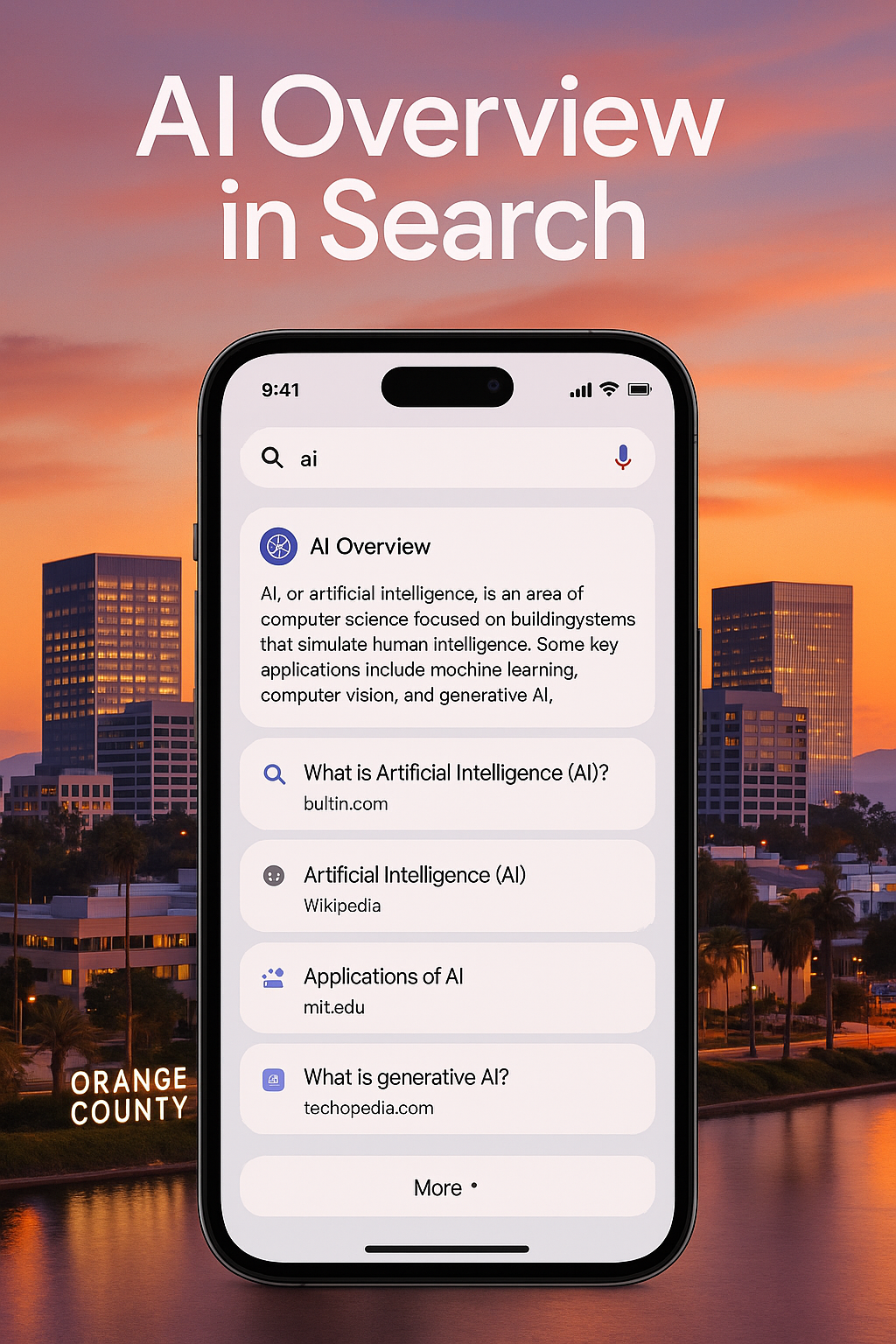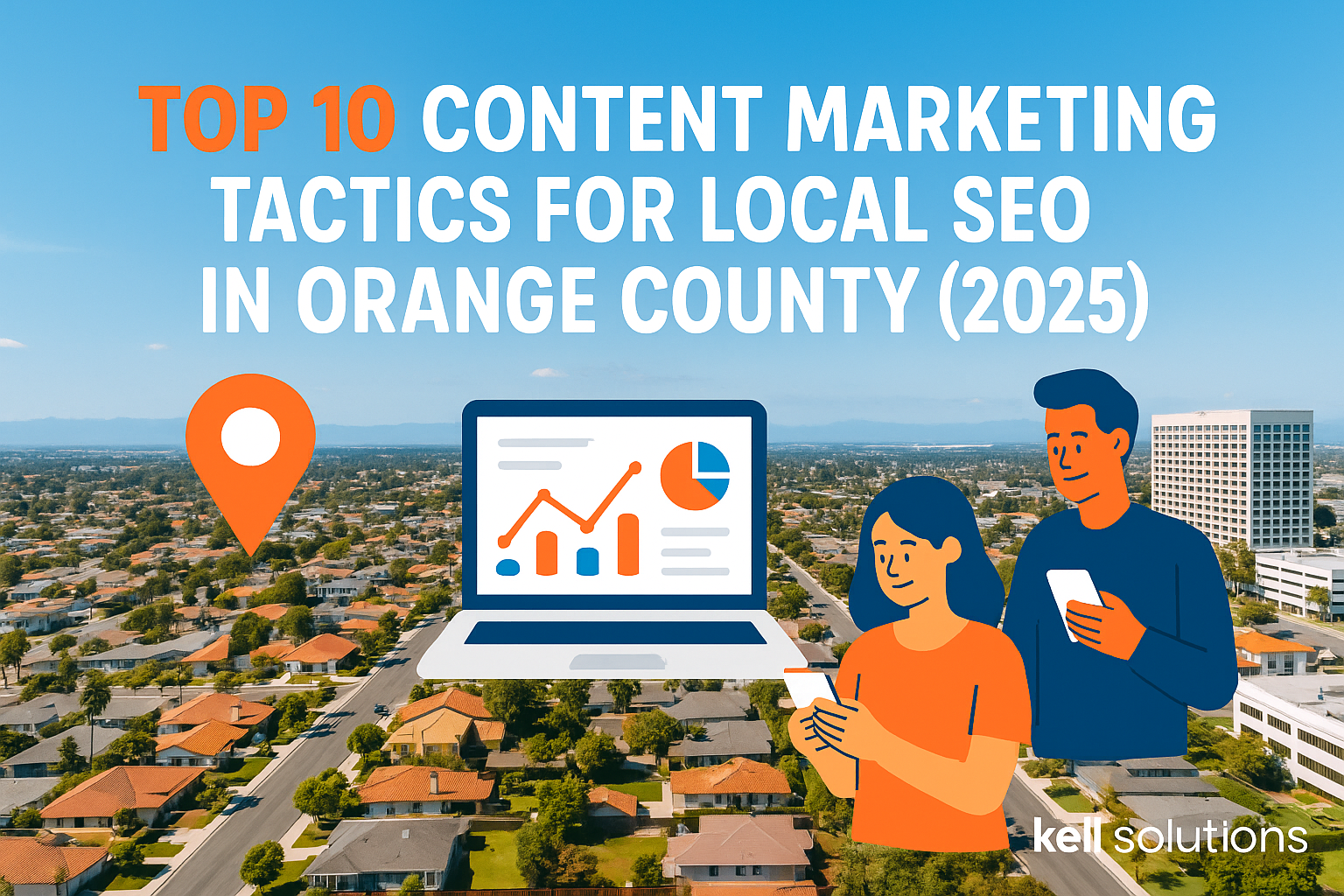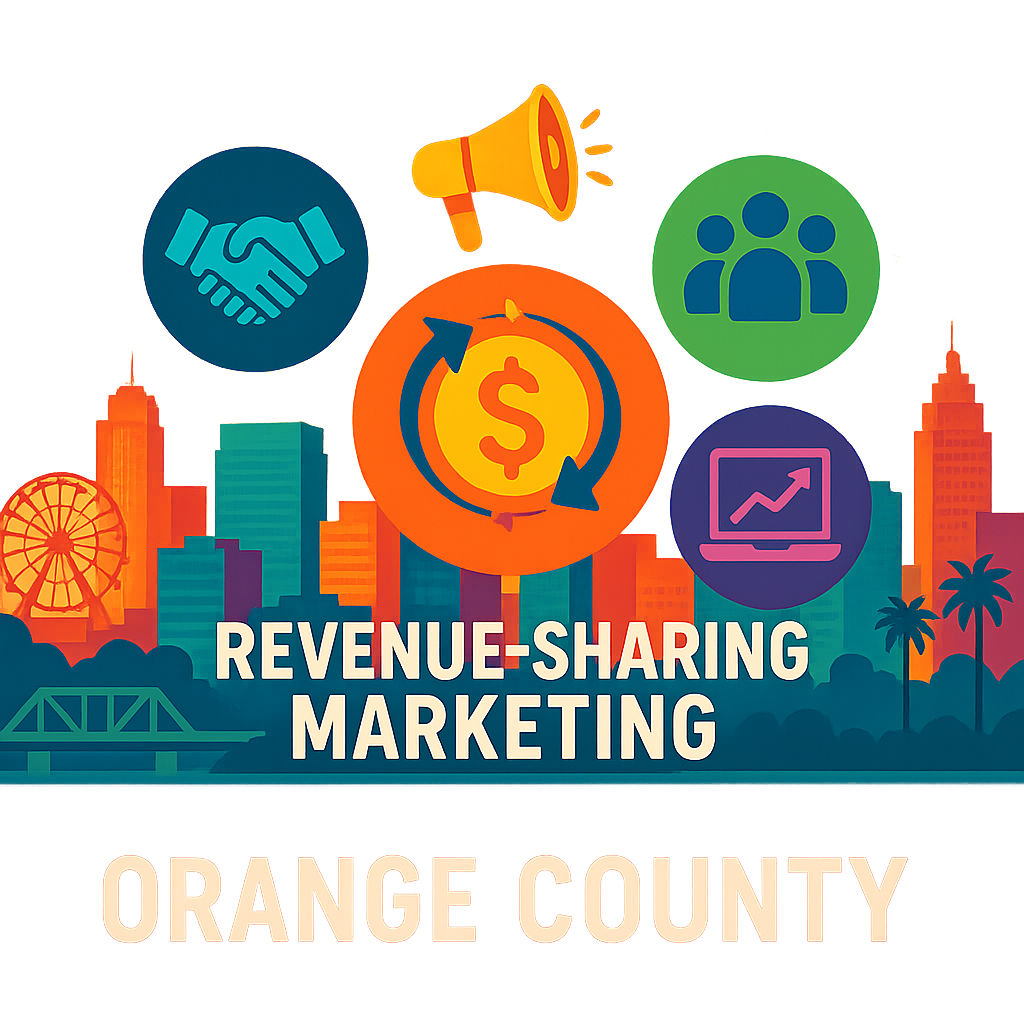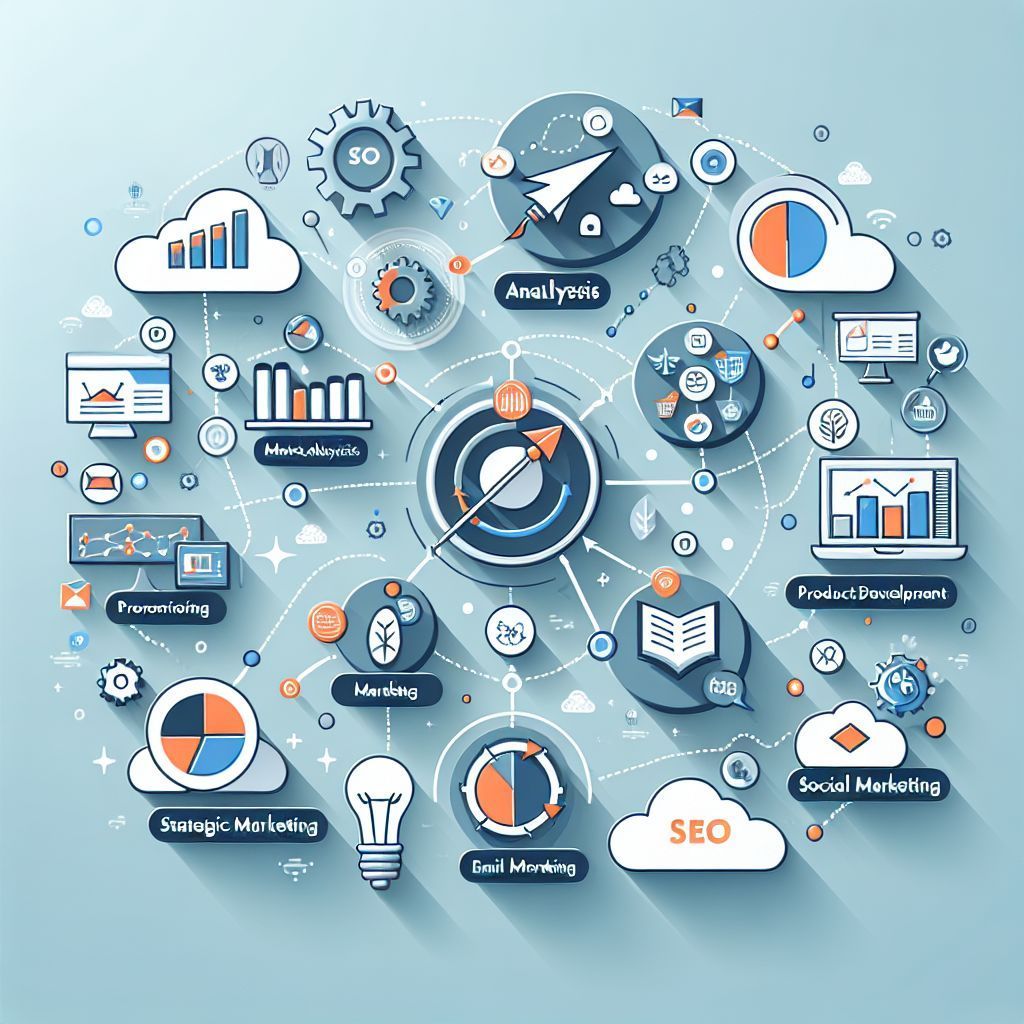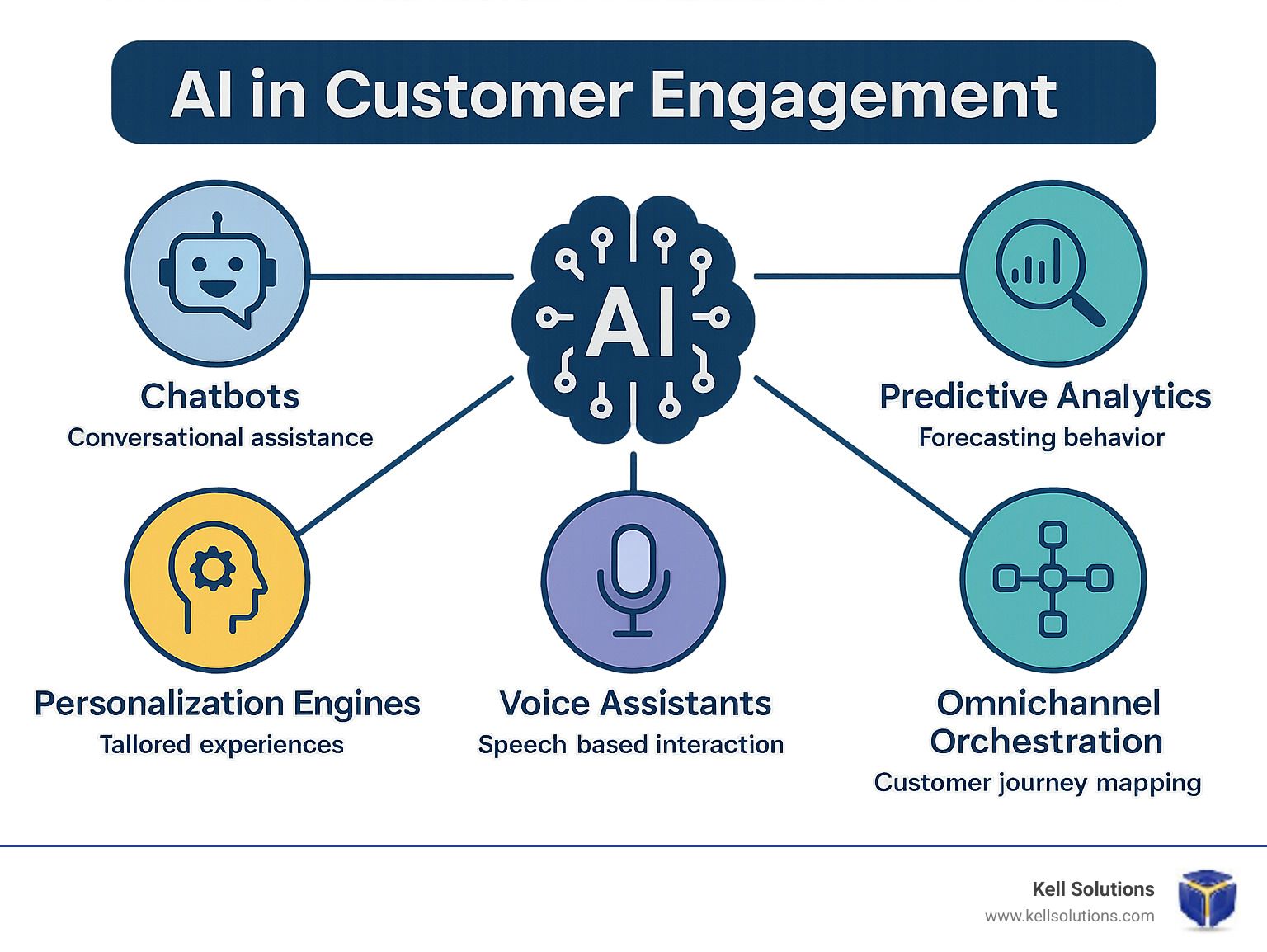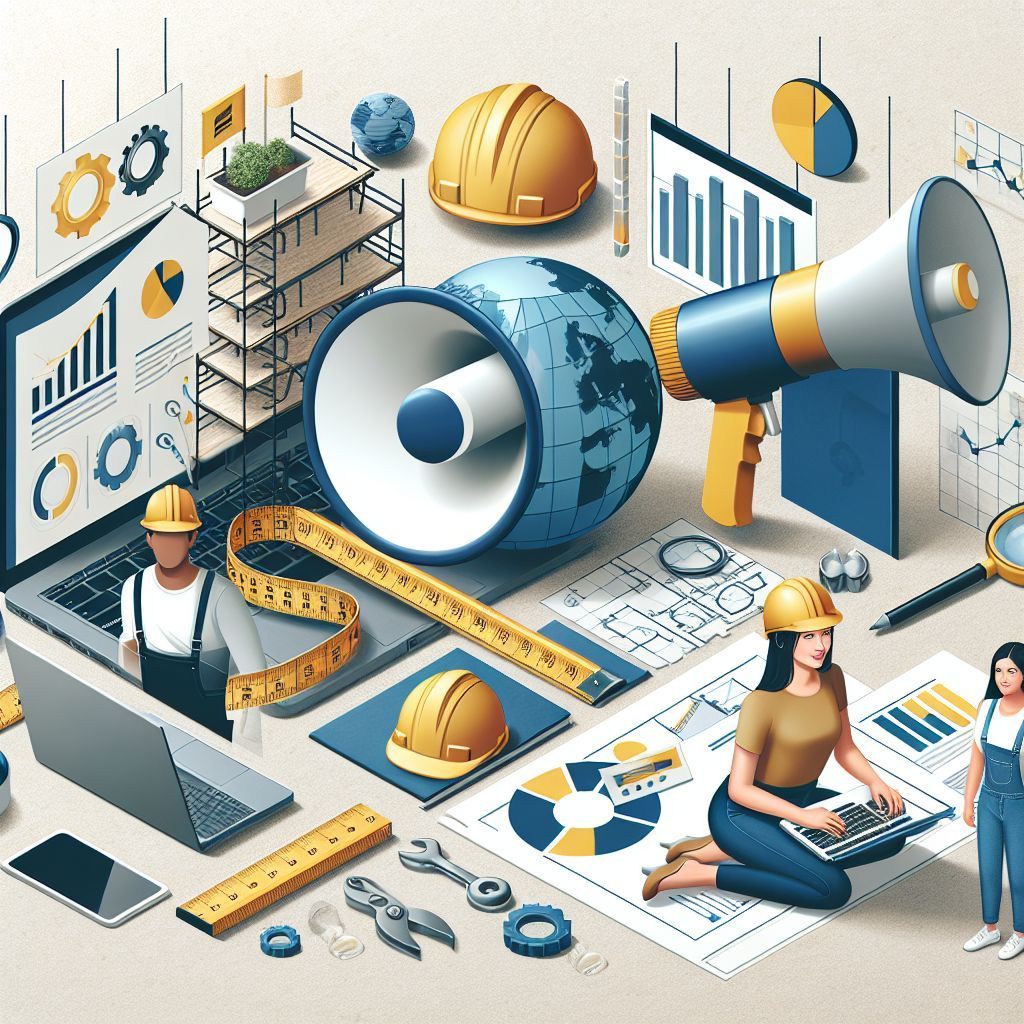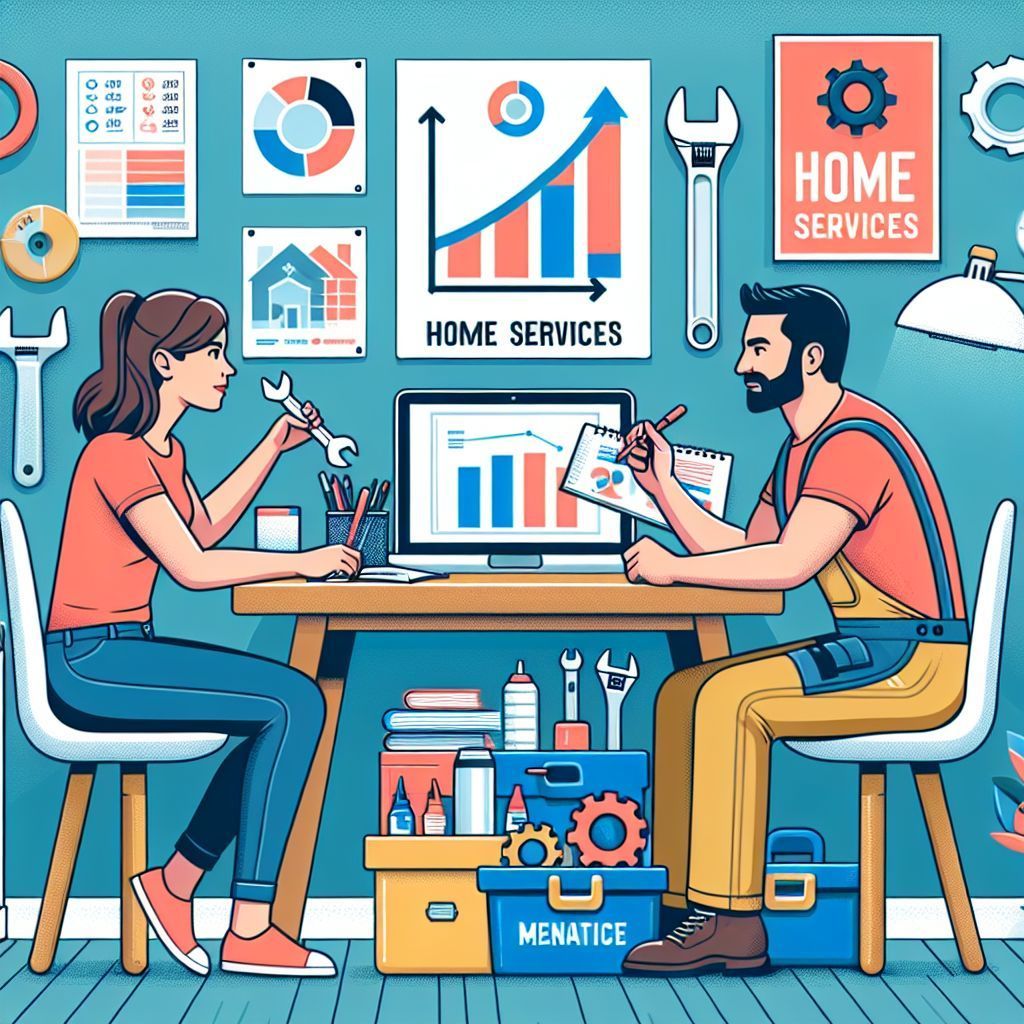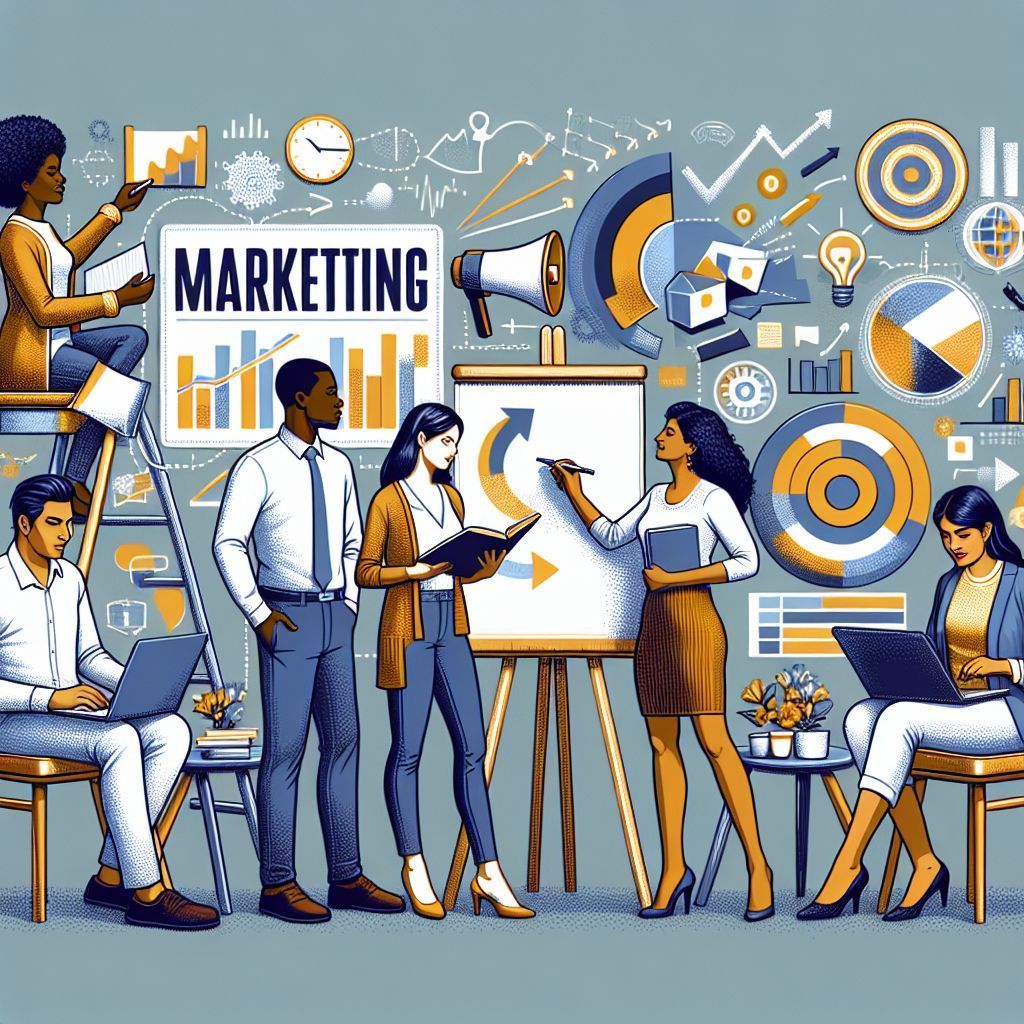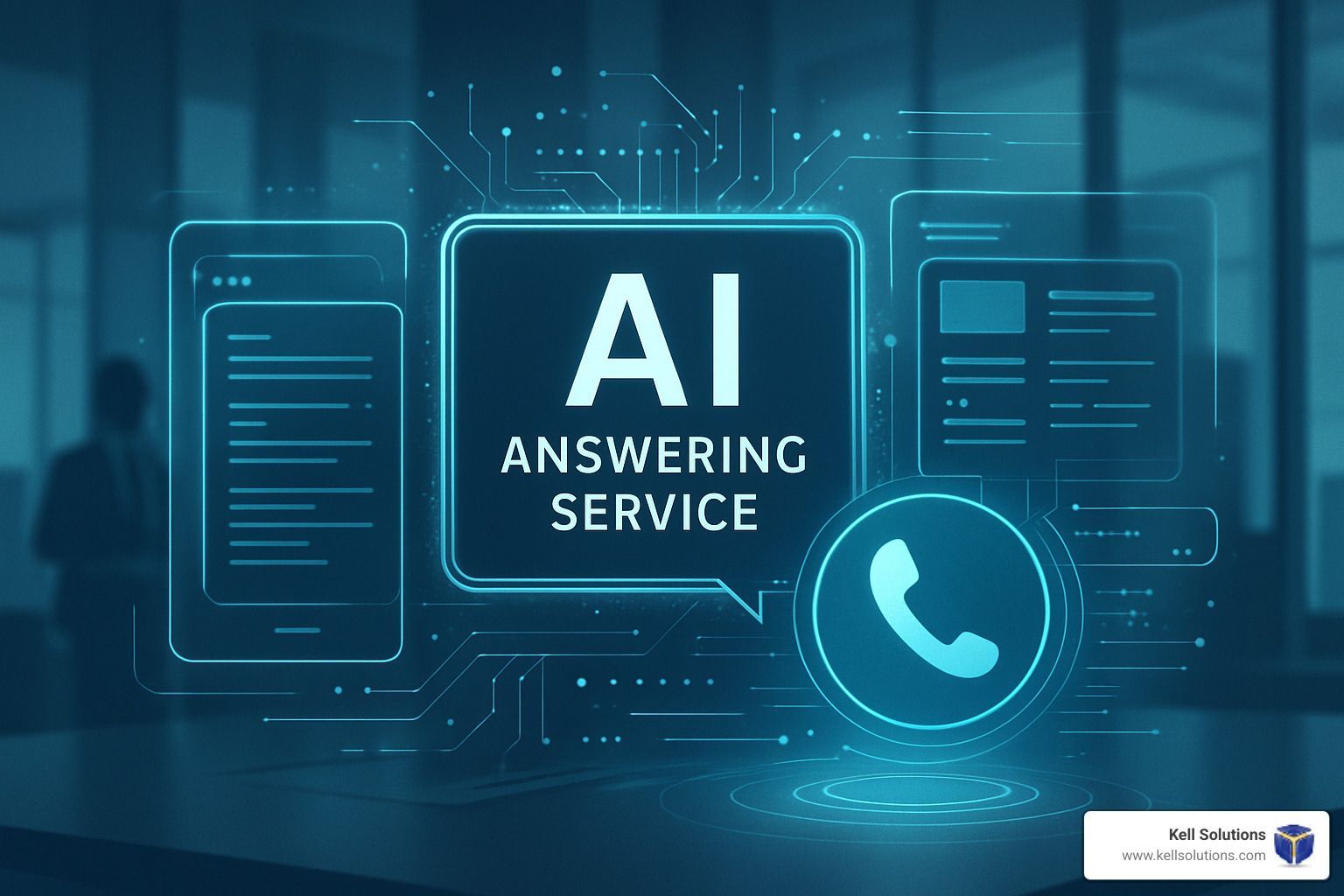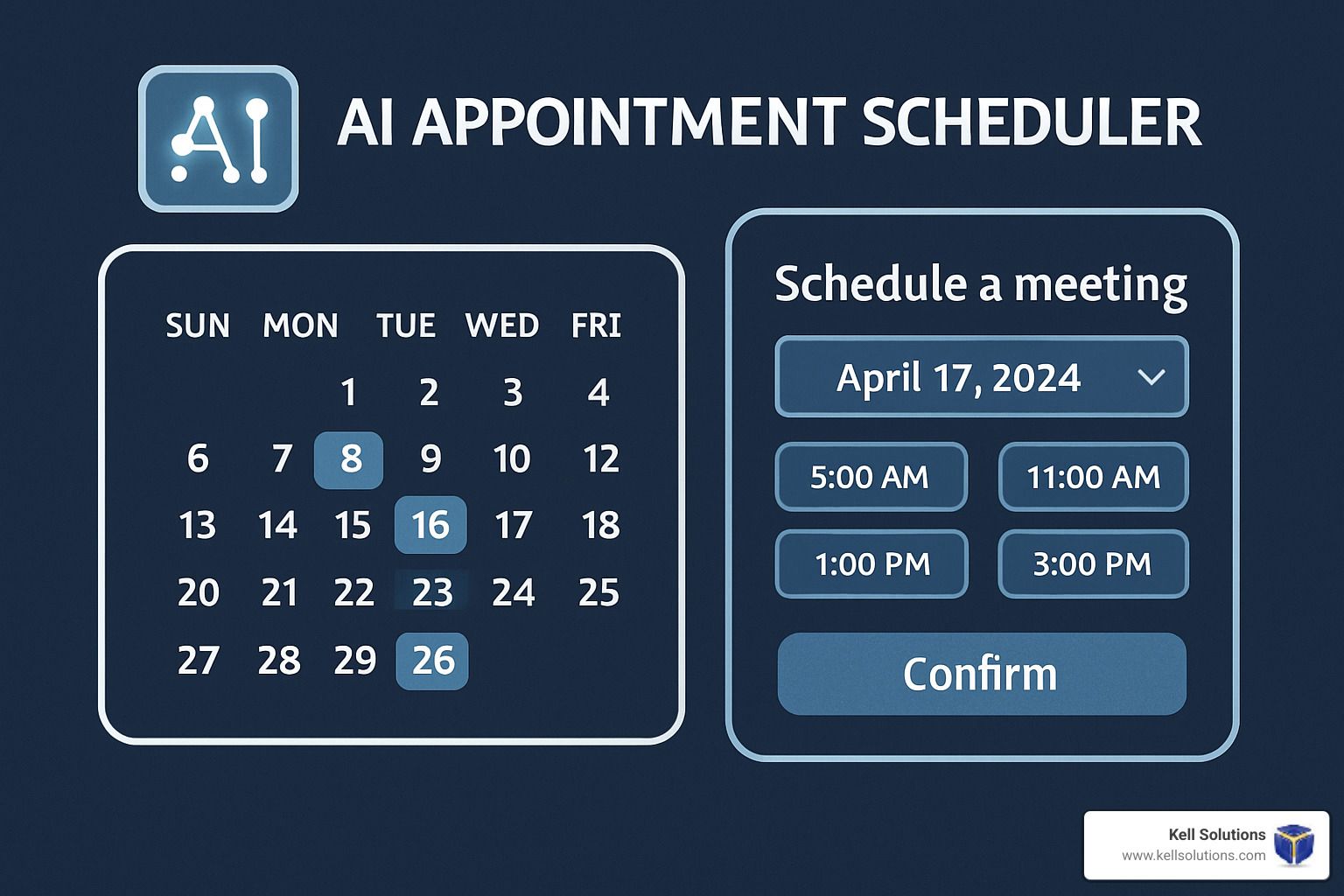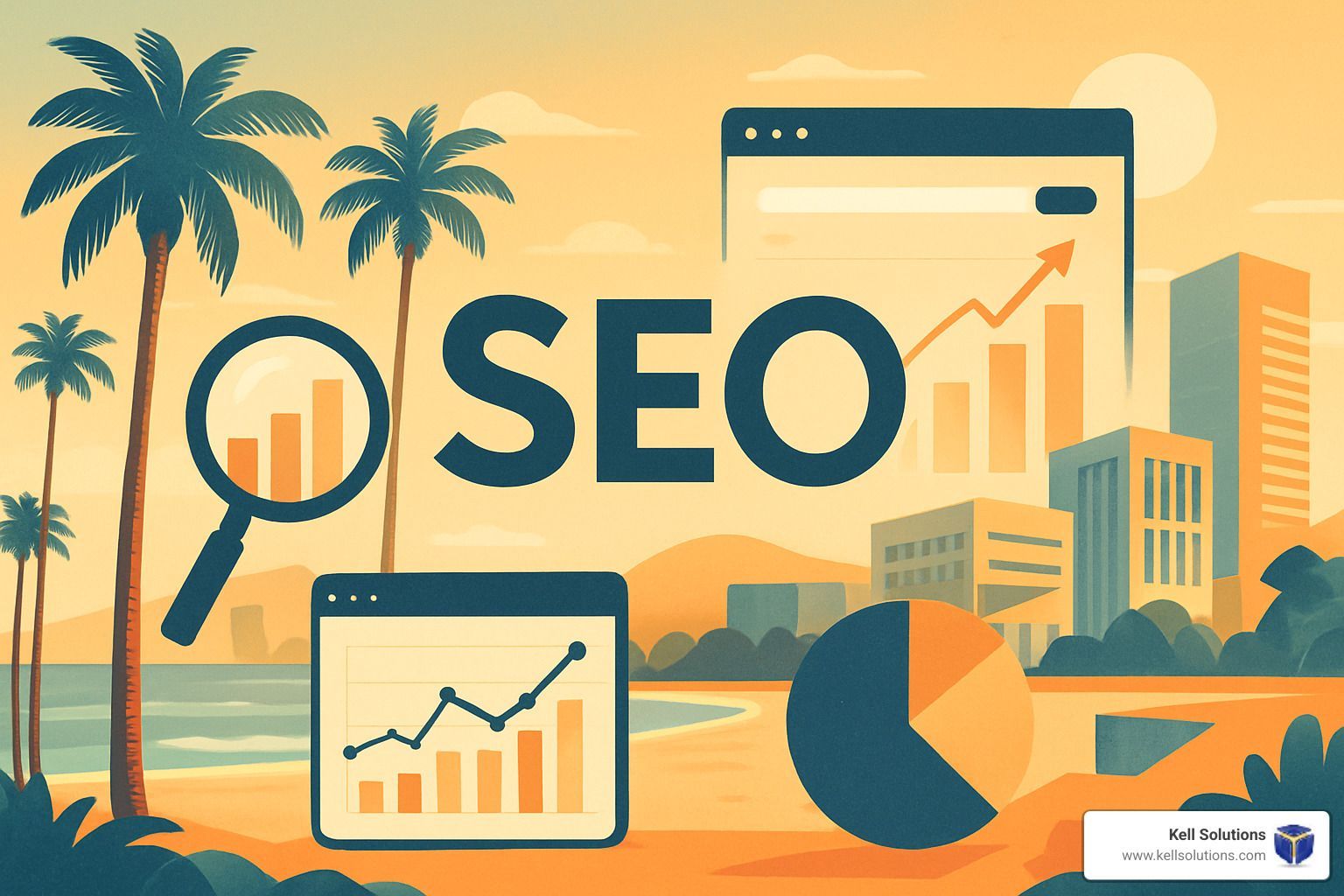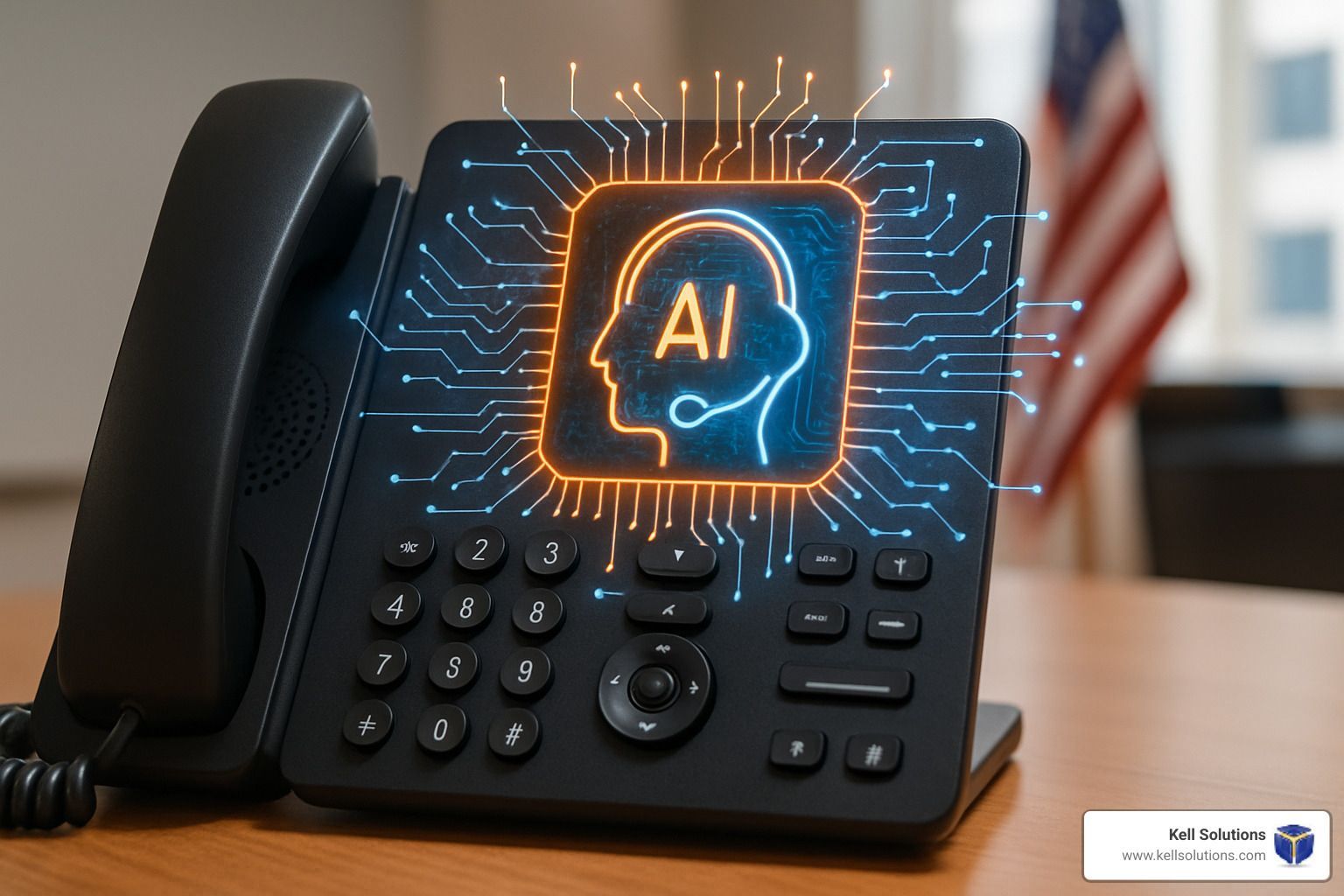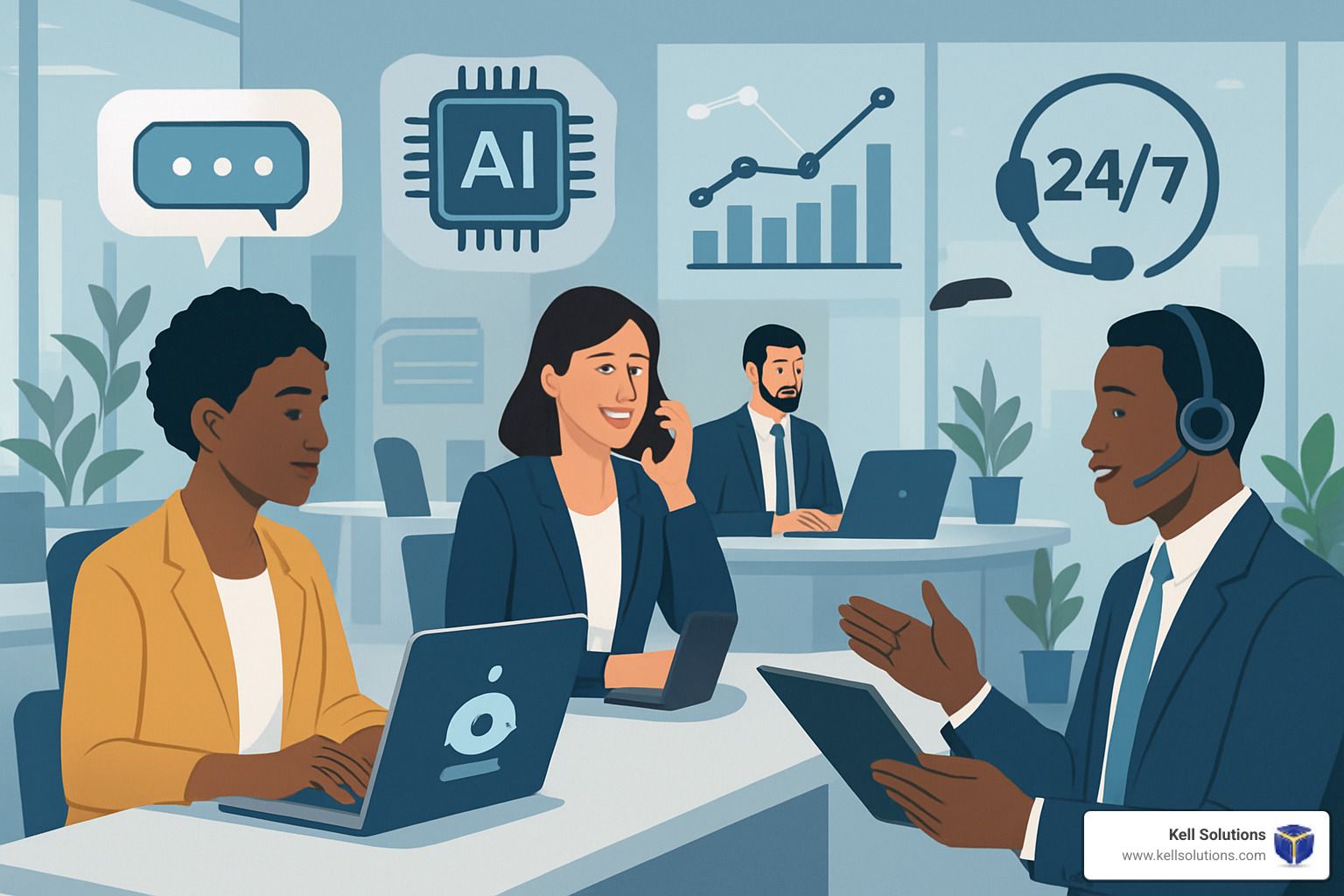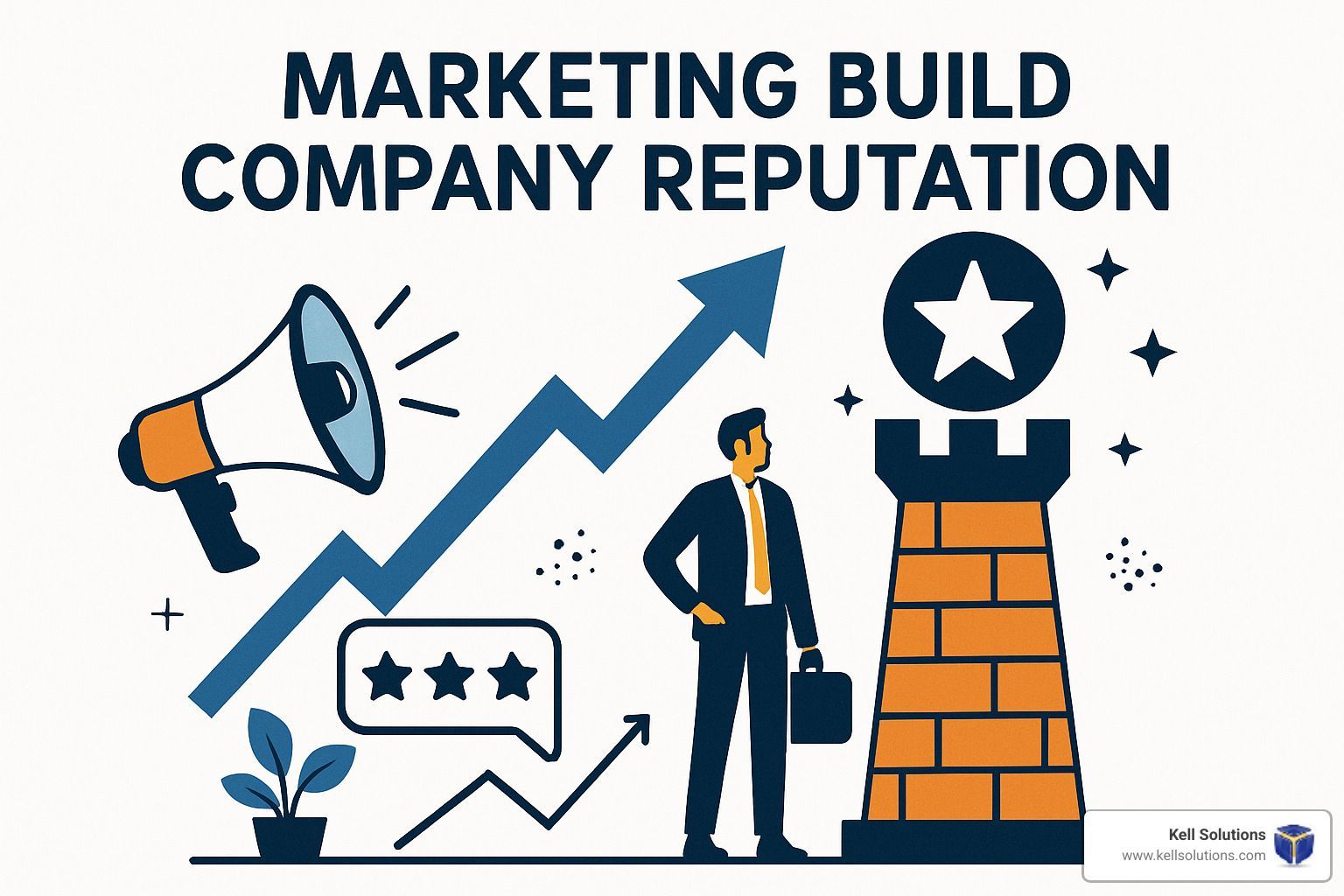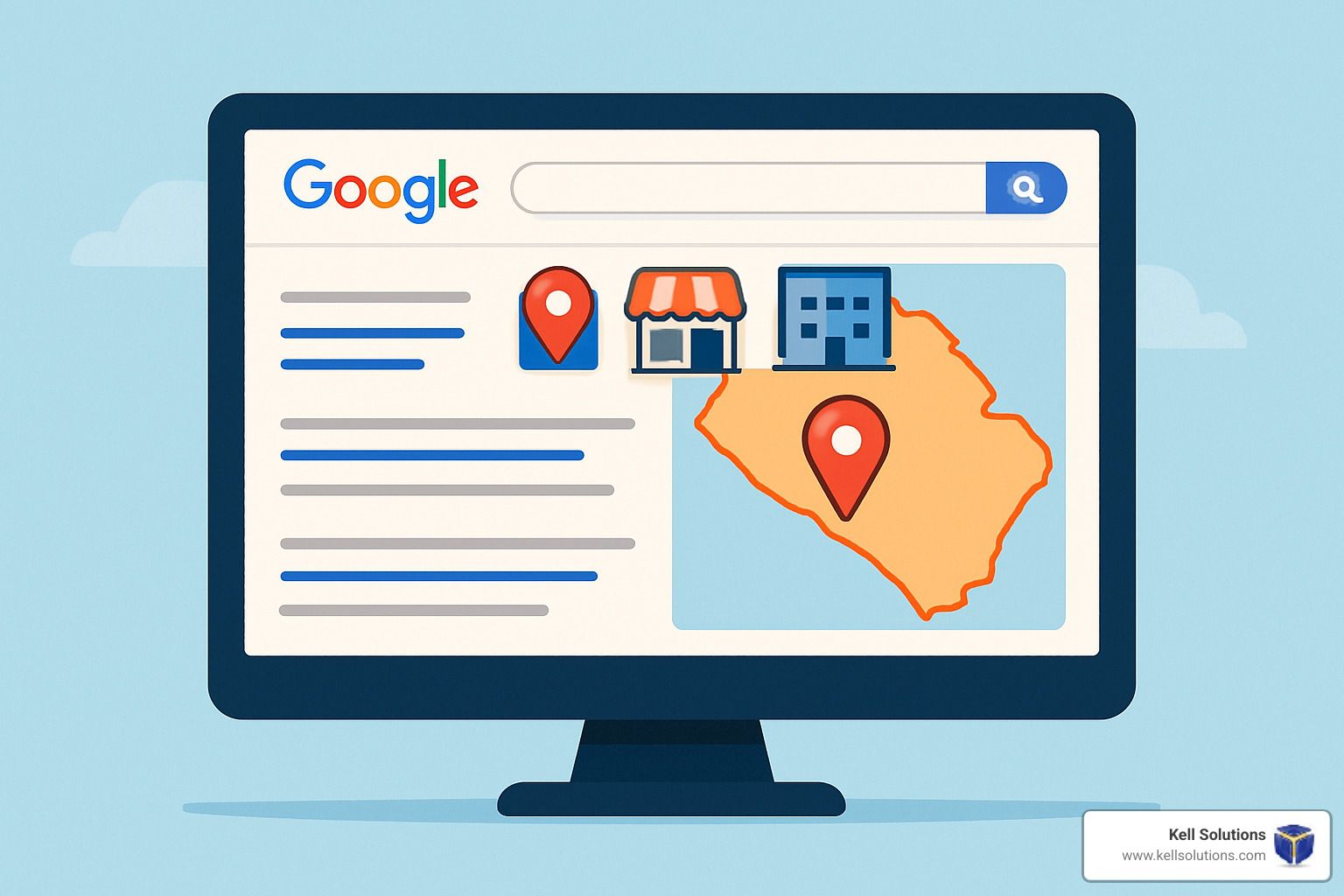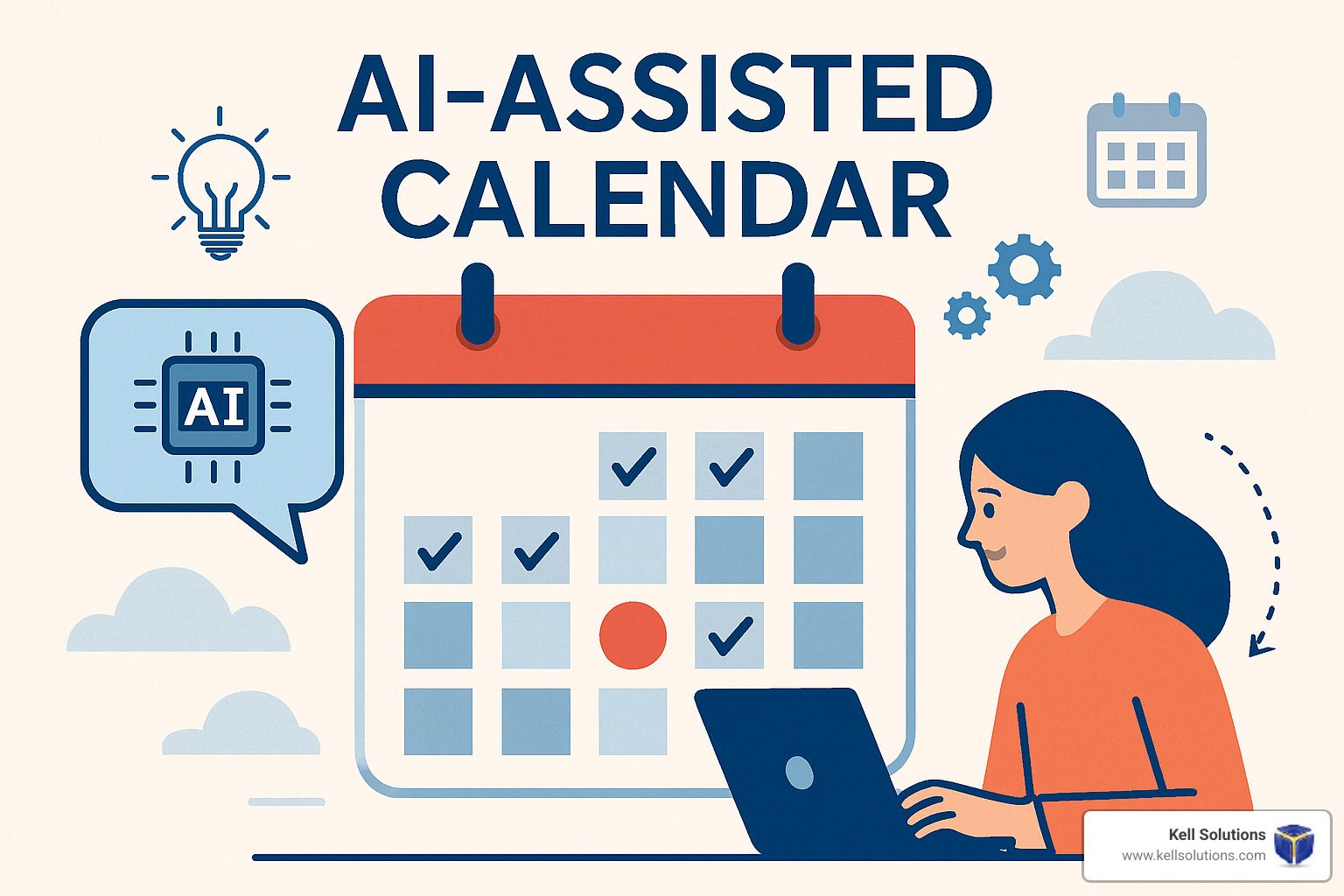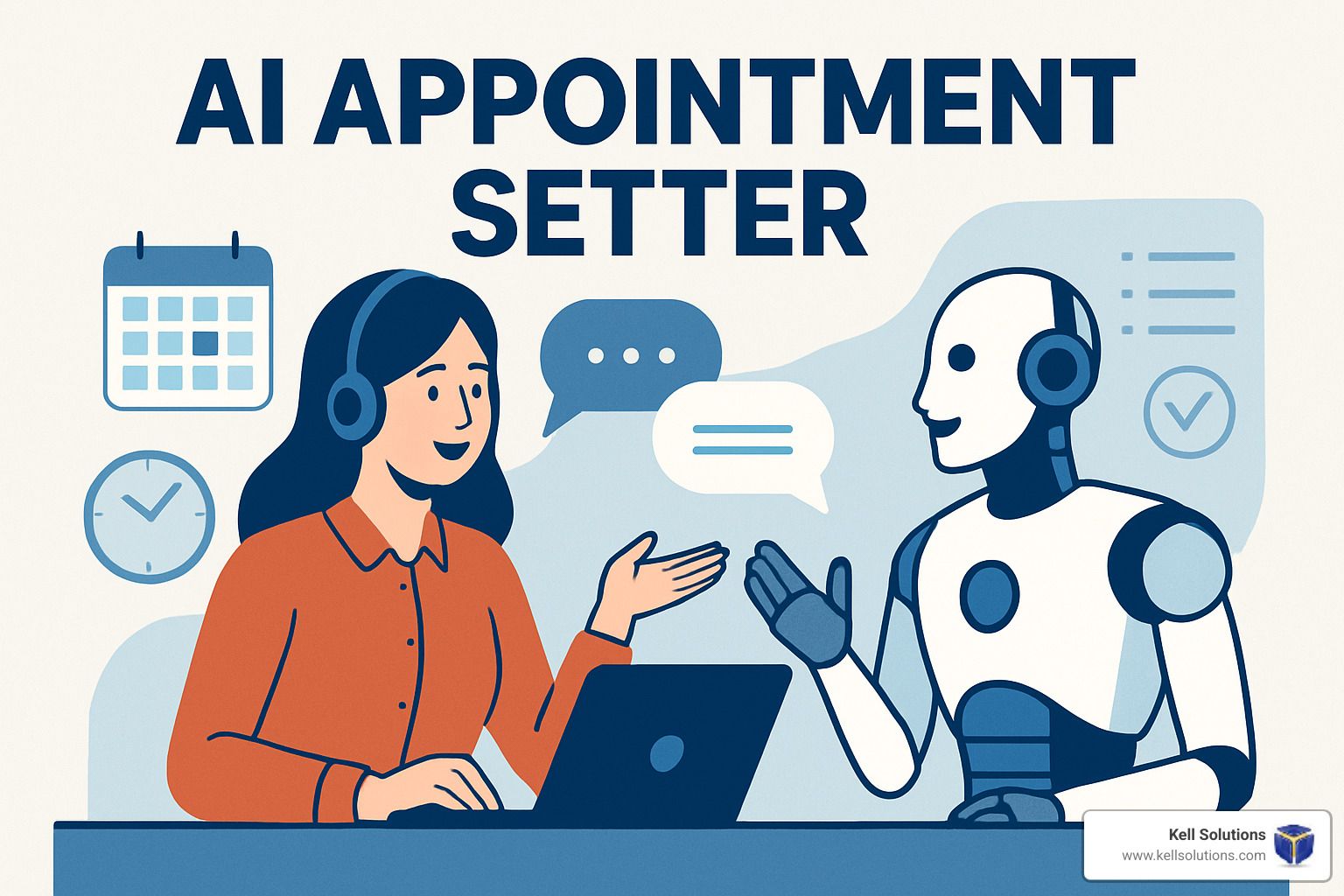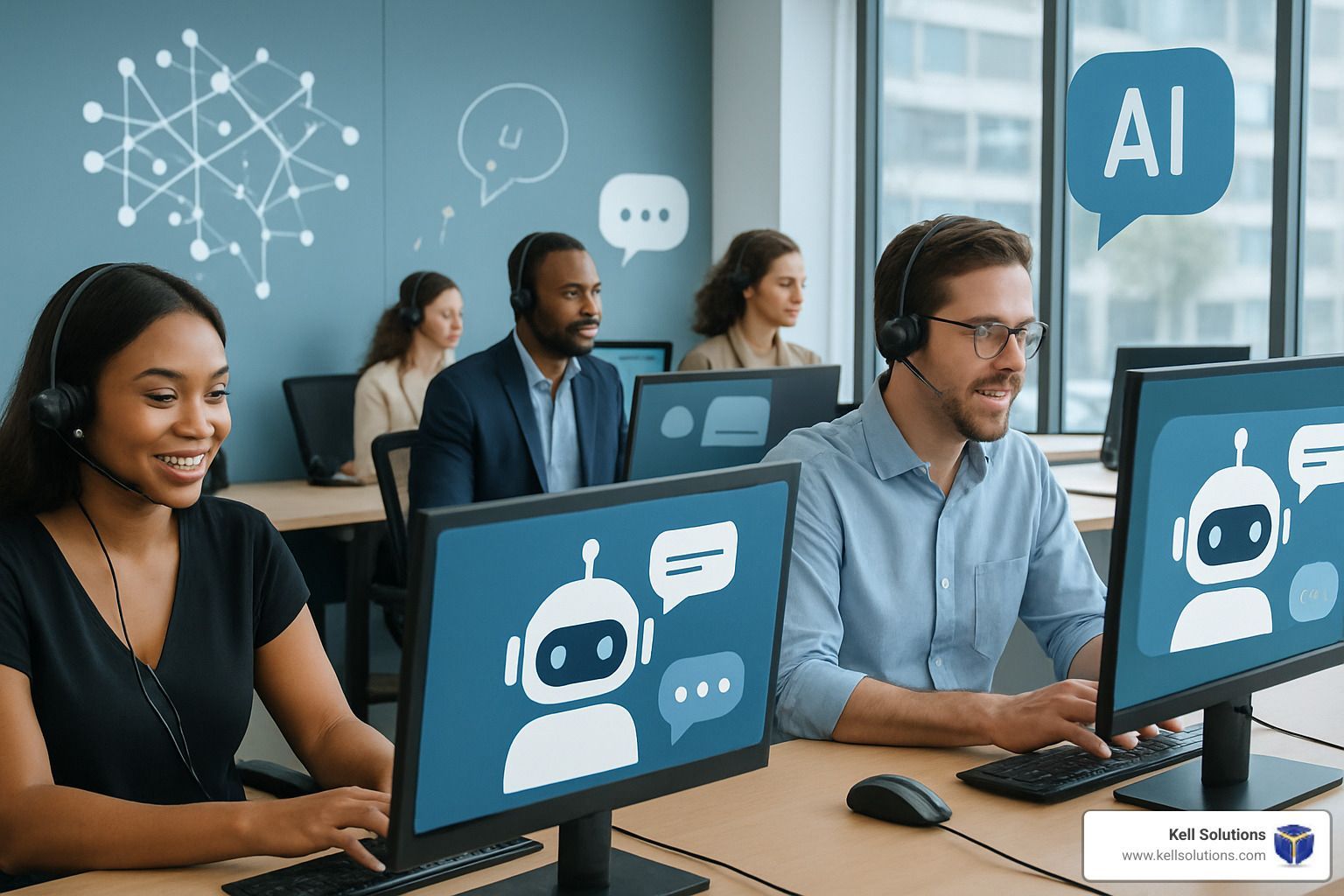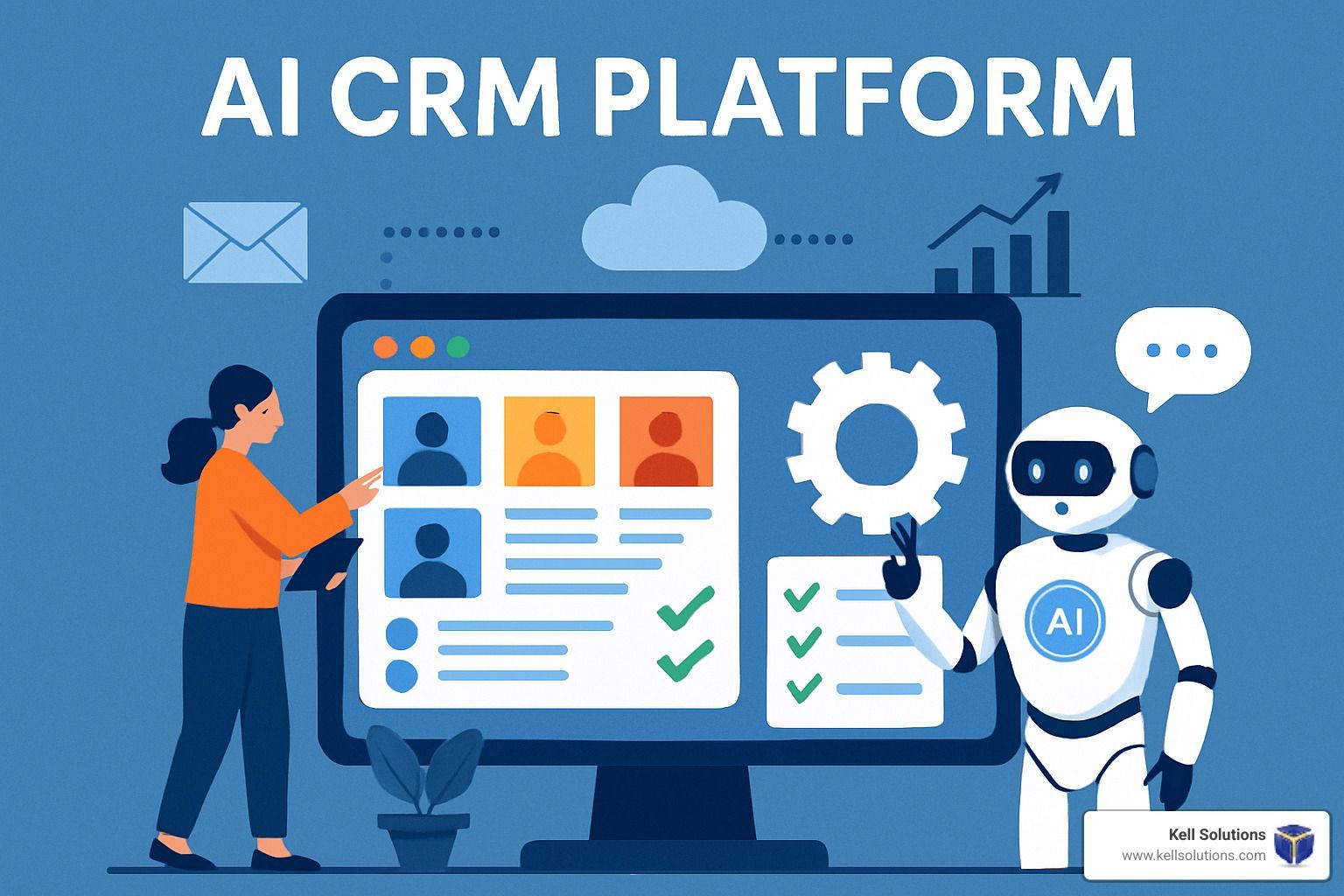AI and Next Best Action Walk into a Bar... Here's What Happens Next
Open up Personalized Customer Engagement with AI
AI next best action is a data-driven approach that uses artificial intelligence to determine the optimal next step in customer interactions based on real-time context and historical patterns.
What is AI Next Best Action?
According to a McKinsey report, 71% of consumers expect personalized experiences, yet many businesses still fall short. AI next best action bridges this gap by moving beyond static, segment-based marketing to deliver individually custom interactions that feel genuinely relevant to each customer.
Unlike traditional campaigns that start with a product and search for customers, AI next best action starts with the customer and determines what they need right now—whether that's a product recommendation, service support, or simply more information.
I'm Gregg Kell, and through my work at Kell Solutions, I've implemented AI next best action strategies that transform how businesses engage customers through intelligent automation and personalization that responds to individual needs in real-time. My experience shows that companies implementing these systems see dramatic improvements in both operational efficiency and customer satisfaction.
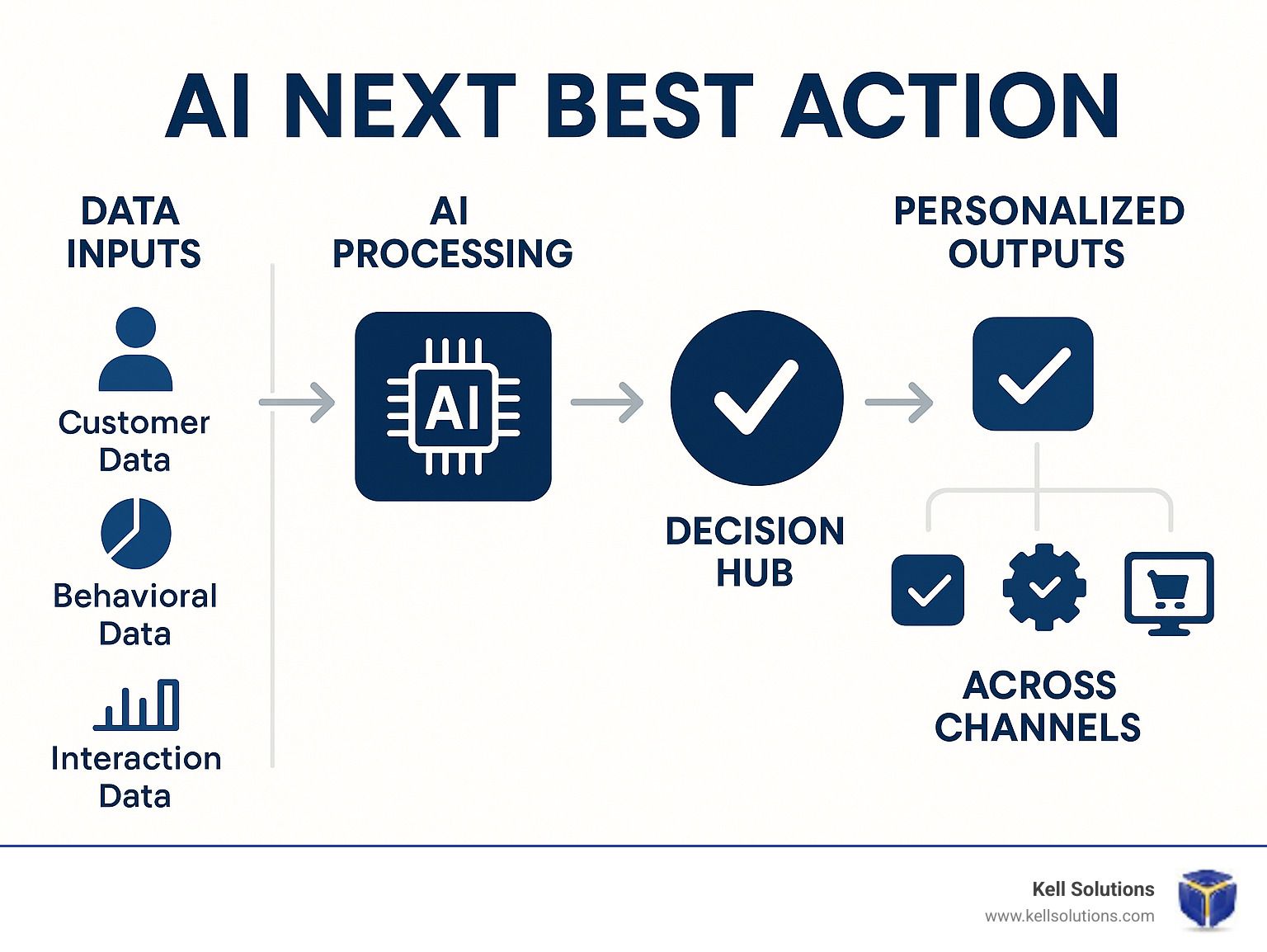
What Is AI Next Best Action?
Picture your favorite coffee shop, where the barista remembers exactly how you like your latte and can tell when you might be in the mood to try their seasonal special. That's the essence of AI next best action – a digital companion that understands each customer's unique preferences and circumstances, ready to provide exactly what they need at the perfect moment.
At its heart, AI next best action is a customer-first approach that continuously evaluates numerous possible interactions for each individual and selects the most appropriate one based on their specific context, history, and current situation. It goes beyond simple selling – it's about nurturing genuine relationships through meaningful, timely, and valuable exchanges.
This approach draws inspiration from the OODA Loop (Observe, Orient, Decide, Act) developed by military strategist John Boyd. Just as pilots must make instant decisions in rapidly changing conditions, businesses must respond intelligently to customer signals across multiple channels in real-time.
As Neil Hayward, a pioneer in the field, wisely notes: "Stop thinking of next best offer and instead think of next best action. Is there a complaint to handle or an issue to fix? That's often more important than trying to sell something new."
How AI Next Best Action Differs from Traditional Campaigns
Traditional marketing and AI next best action represent fundamentally different philosophies of customer engagement:
Traditional Campaigns: Product-centric: "We have a product, who should we target?"
AI Next Best Action: Customer-centric: "What does this specific customer need right now?"
Traditional Campaigns: Batch processing: Overnight segmentation for next day's outreach
AI Next Best Action: Real-time: Instant decisioning based on current context
Traditional Campaigns: Segment-based: Same message to similar customer groups
AI Next Best Action: Individual: Unique recommendations for each customer
Traditional Campaigns: Calendar-driven: Based on marketing schedule
AI Next Best Action: Context-driven: Based on customer signals and behavior
Traditional Campaigns: Static rules: Pre-determined decision trees
AI Next Best Action: Dynamic learning: Models that adapt based on outcomes
A telecommunications company in Singapore experienced this difference when they transitioned from traditional campaigns to AI next best action. The results were remarkable – a 40% increase in click-through rates alongside a 20% reduction in marketing costs. Why such dramatic improvement? Because relevancy is the key to engagement, and AI-powered personalization delivers precisely that at scale.
As regulatory pressures increase and consumers become more selective about which communications they'll tolerate, the old batch-and-blast approach grows increasingly ineffective. While outbound channels face stricter regulations, inbound channels like websites, call centers, and physical locations continue to grow in importance – making real-time, contextual decision-making essential for modern businesses.
Next-Best Offer vs AI Next Best Action
There's an important distinction between "next-best offer" and "AI next best action" that many businesses miss:
Next-best offer narrowly focuses on product recommendations – essentially asking "what can we sell this customer next?"
AI next best action encompasses a much broader spectrum of interactions – asking "should we offer a product, provide information, request feedback, solve a problem, or simply express appreciation?"
As one banking executive eloquently put it: "Next-best offer is transaction-focused. Next-best action is relationship-focused."
This distinction matters deeply because customers don't just want to be sold to – they want to be understood. A bank in Australia reported a 50% jump in customer satisfaction after implementing an AI next best action system that prioritized building relationships over pushing immediate sales.
According to McKinsey's research on personalization expectations, 76% of consumers feel frustrated when personalization is missing from their company interactions. This frustration directly translates to lost revenue and damaged relationships.
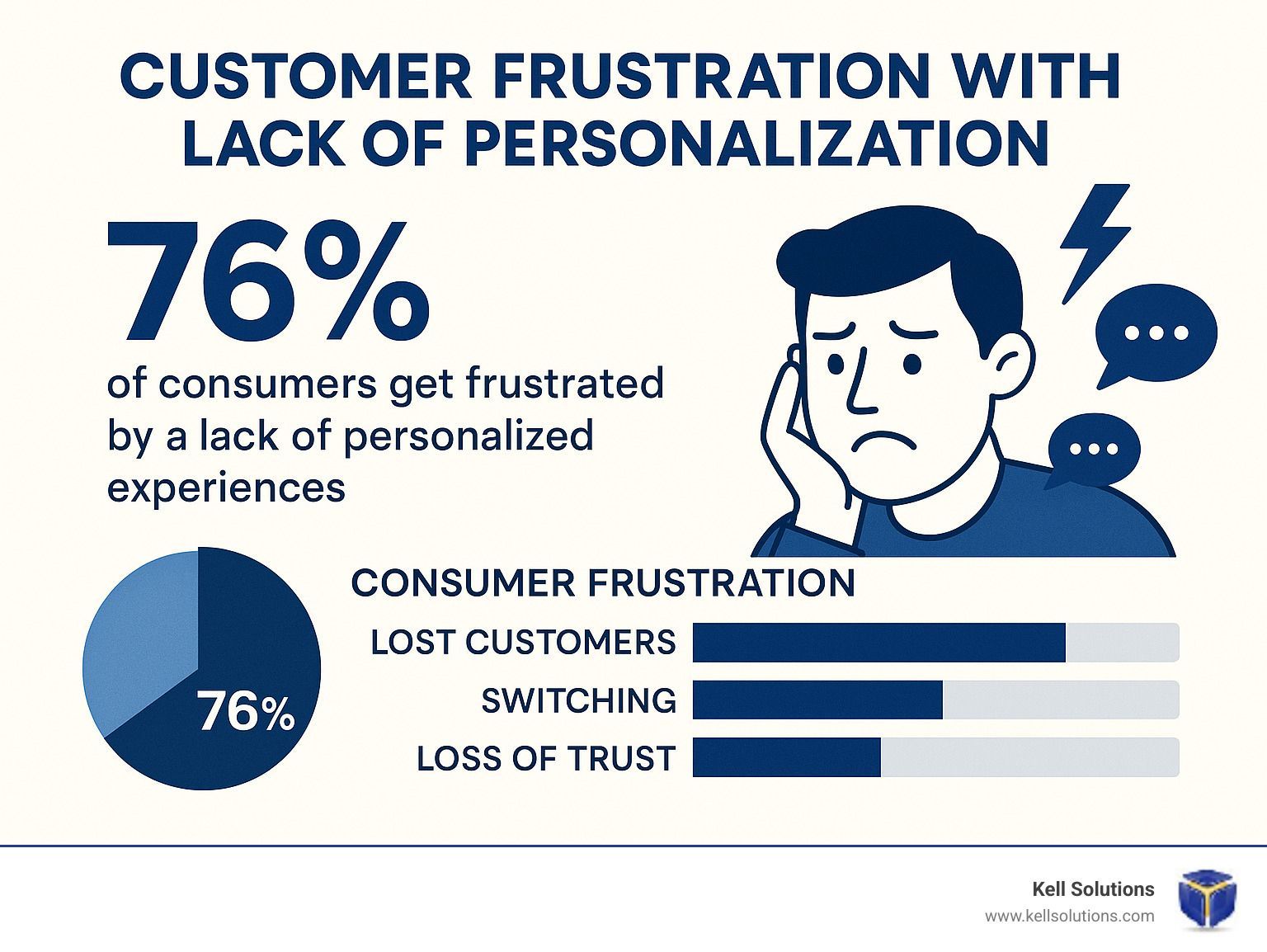
Anatomy of an NBA Engine: Data, Models & Decision Hub
Ever wonder what's actually happening behind the scenes when you get that perfectly timed offer or helpful suggestion from a company? Let's peek under the hood of an AI next best action system to see how the magic happens.
Think of an AI next best action engine as a smart orchestra conductor – coordinating data, algorithms, and business rules to create a harmonious customer experience. This isn't just random personalization; it's an intricate system designed to understand and respond to your unique needs.
Data Requirements & Governance
Great AI next best action systems start with great data – it's the foundation everything else builds upon.
When we build these systems at Kell Solutions, we focus on gathering a complete picture of each customer. This includes basic profile information (who you are), interaction history (what you've done), real-time context (what you're doing right now), and sometimes even external factors like weather or market conditions.
But having tons of data isn't enough – it needs to be high-quality and well-managed. One e-commerce company in Japan learned this lesson firsthand. Before jumping into AI, they spent months cleaning and organizing their customer data. The result? A 30% jump in engagement and 25% boost in sales once their system went live.
Data privacy isn't an afterthought – it needs to be baked into the system from day one. Customers should always know how their information is being used and have clear options for controlling it. This isn't just about following regulations; it's about building trust.
As data scientist Peter Song puts it: "Fresh, accurate, and organized data sets are the foundation of next-best-action marketing. The ML model can be changed as you feed fresh data over time. This flexibility will let the model pick up new behaviors."
Under the Hood Algorithms
The brain of any AI next best action system is its collection of smart algorithms working together. These aren't simple if-then rules – they're sophisticated models that learn and improve over time.
Most systems use a combination of approaches:
Predictive models look at past behavior to forecast what you might do next. Adaptive models continuously learn from new interactions. Collaborative filtering finds patterns by comparing similar customers (like how Netflix recommends shows). And reinforcement learning gets smarter through ongoing experimentation – trying different approaches and learning what works best.
The real power comes from combining these approaches. For instance, a predictive model might generate the initial recommendations, while reinforcement learning continuously fine-tunes them based on real-world results.
AI expert Nathaniel Rounds makes an important point: "It doesn't do much good to say 'We're using next best action to personalize,' if the personalized offers are sent at the wrong time, at the wrong frequency, or over the wrong channel, or with the wrong incentive."
This highlights why the best systems optimize the complete package – not just what to offer, but when, how, and with what messaging. Some call this "next best everything" – and it's what creates truly seamless experiences.
Real-Time Decisioning Workflow
Here's where things get really interesting. The actual decision-making happens in milliseconds through a central "decisioning hub" that follows a lightning-fast workflow:
First, the system captures your current context – what page you're viewing, what time it is, what device you're using. Then it applies business rules to filter out inappropriate actions (no need to offer you something you just bought!).
Next, AI models calculate propensity scores – essentially predicting how likely you are to respond positively to each potential action. The system also assesses the business value of each option.
The "arbitration" step is where everything comes together – weighing customer needs against business priorities to select the optimal next step. Once decided, that recommendation gets delivered through the right channel, and your response is captured to make future decisions even smarter.
All of this happens instantly, allowing businesses to respond to customer signals in real-time across every touchpoint. It's like having thousands of personalized conversations simultaneously – each one perfectly custom to the individual.
At Kell Solutions, we've seen how this real-time decisioning transforms customer interactions. Our AI voice agents leverage similar technology to create natural, helpful conversations that respond intelligently to each caller's unique situation. Learn more about our AI-Driven Marketing approaches and how they're revolutionizing customer engagement.
Cross-Industry Use Cases & ROI Proof Points
The beauty of AI next best action lies in its remarkable adaptability across different industries. From retail to healthcare, businesses are seeing impressive returns on their investment in this technology.
Marketing & Sales Highlights
When it comes to marketing and sales, AI next best action is nothing short of transformative. It's changing how businesses connect with customers and nurture those relationships in meaningful ways.
Take the Japanese e-commerce company that saw customer engagement jump by 30% after implementing AI next best action. Not only were customers more engaged, but sales revenue increased by an impressive 25%. That's the power of delivering the right message at precisely the right moment.
National Australia Bank tells a similar success story. They achieved a 50% increase in mortgage lending conversions by personalizing next-best-actions for each customer. Meanwhile, a large UK retail bank reported a 30% sales uplift during their pilot program alone.
These impressive results come from the ability to deliver perfectly targeted offers when they matter most. Imagine a customer browsing winter coats online. Rather than showing generic "customers also bought" items, an AI next best action system might recommend the perfect matching scarf based on their specific color preferences and previous purchases.
"It's like having a crystal ball, but way cooler (and more data-driven)," as one sales leader put it. For sales teams, this technology helps prioritize leads and determine the best outreach strategy for each prospect, making every conversation more productive.
Service & Retention Wins
Customer service and retention are where AI next best action truly shines. The impact on customer loyalty can be dramatic:
A telecommunications provider managed to reduce customer churn by 15% using AI next best action to identify who was at risk of leaving and proactively address their specific concerns. No more one-size-fits-all retention offers – just personalized solutions that actually solve problems.
In healthcare, a South Korean hospital decreased readmission rates by 15% and cut treatment costs by 25% after implementing a Next Best Action system for post-surgery care. The system ensured patients received personalized follow-up actions at the right time.
An Australian bank reported customer satisfaction increasing by 50% through personalized service recommendations. When customers feel understood, their loyalty naturally follows.
Contact centers experience some of the most visible improvements. AI next best action gives agents real-time guidance during calls, analyzing the conversation and customer context to suggest the most appropriate response. This transforms service interactions from reactive problem-solving to proactive relationship-building.
As Dave Albano, CMO at Unify Consulting, explains: "Smart assistant prepares sellers for a more targeted engagement based on their customers' likelihood of purchase." The same principle applies to service agents, who can address customer needs more effectively when equipped with AI-powered recommendations.
Beyond CX: Healthcare & Finance
AI next best action extends far beyond traditional customer experience into specialized applications that are changing how entire industries operate:
Healthcare providers use it to recommend optimal treatment pathways based on patient history, condition, and outcomes data. This leads to better patient outcomes and more efficient use of resources.
Financial institutions leverage it for fraud detection, identifying suspicious transactions that warrant investigation before they become problems. The system learns from each interaction, becoming more effective at spotting potential fraud over time.
Insurance companies apply it to claims processing, recommending appropriate settlement actions based on claim details, policy information, and historical data. This speeds up the process while ensuring consistent, fair outcomes.
The South Korean hospital mentioned earlier provides a compelling example of AI next best action in healthcare. Their system analyzed patient data to recommend personalized follow-up actions, ensuring patients received the right care at the right time.
In financial services, AI next best action helps ensure regulatory compliance while delivering personalized guidance. A bank might use it to recommend suitable investment products based on a customer's risk profile, financial goals, and market conditions—all while ensuring compliance with regulations like KYC and suitability requirements.
Step-by-Step Guide to Launching & Scaling NBA
Implementing AI next best action is a journey, not a one-time project. Here's a roadmap for success:
1. Define Goals & Metrics
Before diving into the technical aspects, take a moment to clarify what success looks like for your organization. What are you hoping to achieve with AI next best action?
Think about your customer lifetime value goals – how will this system strengthen your long-term customer relationships? Consider specific conversion rates you want to improve, whether that's moving prospects from browsing to buying or encouraging existing customers to try new services.
Don't forget about the human element – how will you measure improvements in customer satisfaction? And of course, there's the bottom line – what operational efficiencies do you expect to gain?
I always recommend setting specific, measurable targets that give your team something concrete to aim for. "Increase cross-sell conversion by 20%" is much more motivating and trackable than just "improve sales." And remember to establish your baseline metrics before implementation – you can't celebrate a 15% reduction in customer churn if you don't know where you started!
2. Assemble Data Foundation
Think of this step as building the foundation of a house – it's not the most glamorous part, but everything else depends on getting it right.
Your goal is to create a unified customer data platform that brings together information from all touchpoints. This means connecting your website interactions, call center conversations, purchase history, and more into a cohesive picture of each customer.
You'll need real-time data pipelines to capture customer signals as they happen – because yesterday's data won't help you respond to what a customer needs right now. Where appropriate, consider enriching your first-party data with relevant third-party sources to fill in the gaps.
This step often takes longer than expected, but the payoff is worth it. I worked with a bank in Australia that spent six months integrating their data before launching their AI next best action program. The result? A 50% increase in customer satisfaction and 35% higher cross-selling success. That's the power of building on solid ground.
3. Build & Train Models
With your data foundation in place, it's time to develop the brains of your operation – the AI models that power your AI next best action system.
Many organizations find success starting with automated machine learning (AutoML) platforms to accelerate model development. These tools make it easier to extract meaningful patterns from your raw data through feature engineering – essentially teaching your system what to look for.
Be sure to implement rigorous testing to identify and address potential biases. The last thing you want is an AI system that treats certain customer groups unfairly or makes inappropriate recommendations.
I always advise clients to start simple and iterate. Begin with basic propensity models for a few key actions, then gradually expand to more sophisticated approaches as you learn what works for your business. As data scientist David Yakobovitch notes, "The ML model can be changed as you feed fresh data over time. This flexibility will let the model pick up new behaviors."
4. Deploy Decision Hub & Channels
Now comes the exciting part – bringing your AI next best action strategy to life through a central decision hub that orchestrates everything.
This hub needs to integrate with all your customer-facing channels – your website, mobile app, call center, email systems, and more. You'll develop APIs that allow real-time access to recommendations and create interfaces that deliver next-best-action guidance to your frontline staff.
Think of this decision hub as the central nervous system of your strategy, connecting data, models, rules, and channels. It must perform in real-time, scale with your business, and operate reliably – customers won't wait for your system to catch up!
For call centers, this might mean integrating with agent desktop applications to provide real-time guidance during customer conversations. At Kell Solutions, our AI-powered voice agents can seamlessly incorporate AI next best action recommendations into customer interactions, ensuring personalization is available 24/7, not just during business hours.
5. Measure, Test, Optimize
The launch is just the beginning! Successful AI next best action implementations thrive on continuous improvement.
Set up robust tracking to measure the impact of each action your system recommends. Implement A/B testing frameworks to compare different approaches and see what truly resonates with your customers. Keep a watchful eye on your model performance – AI systems can experience "drift" over time as customer behaviors change.
Most importantly, create feedback loops that use your results to improve future recommendations. The beauty of AI is that it gets smarter with experience, but only if you feed those learnings back into the system.
As one of my clients beautifully put it: "The real magic happens when you blend AI's number-crunching prowess with your team's people skills, creativity, and empathy." That's the sweet spot – technology amplifying human connection rather than replacing it.
Ready to start your AI next best action journey? Check out our 8 essential steps for successful AI implementation for more detailed guidance.
Conclusion
The journey we've taken through AI next best action technology reveals something truly exciting: a fundamental shift in how businesses connect with customers. We're moving away from the old product-first campaigns and embracing genuine customer-centric conversations that feel natural and helpful.
This isn't just another marketing buzzword. When businesses implement AI next best action systems, the results are consistently impressive: engagement jumps 30-40%, sales revenue climbs by 25%, marketing costs drop by 20%, and customers simply feel more satisfied with their experiences. In today's world where personalization isn't just appreciated but expected, these systems are quickly becoming essential rather than optional.
At Kell Solutions, we're bringing these powerful capabilities to businesses through our AI-powered voice agents. Our technology combines round-the-clock availability with smart personalization that adapts to each customer. This means you're always ready with the right response at the right moment, whether your customer reaches out at noon or midnight.
We've seen how businesses across California, South Carolina, and Illinois transform their customer relationships with our solutions. From the sunny shores of Laguna Beach to the busy streets of Chicago, our affordable, custom-built AI agents are helping companies capture more leads and deepen customer connections.
The beauty of AI next best action is its ability to blend advanced technology with a deeply human touch. It's not about replacing the personal connection—it's about enhancing it, making each interaction more relevant and meaningful for your customers.
The future is already here, and it's personalized, real-time, and powered by intelligent systems that learn and improve with every interaction. The question isn't whether your business should implement AI next best action, but how quickly you can start reaping the benefits.
Ready to begin your AI journey? We'd love to show you how our AI solutions can help you deliver the perfect next best action for every customer, every time. Let's create those meaningful connections that turn first-time buyers into lifelong advocates for your brand.
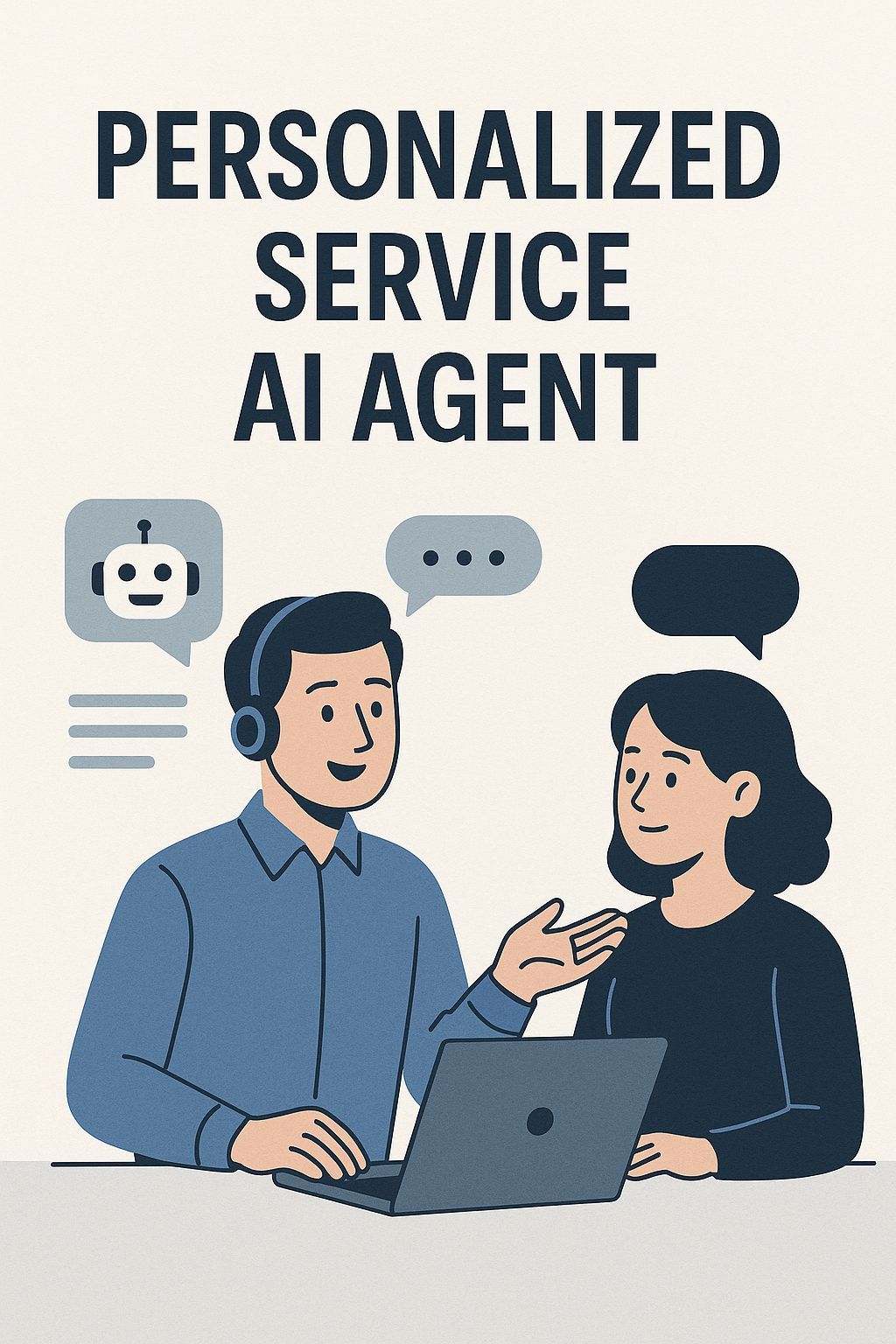
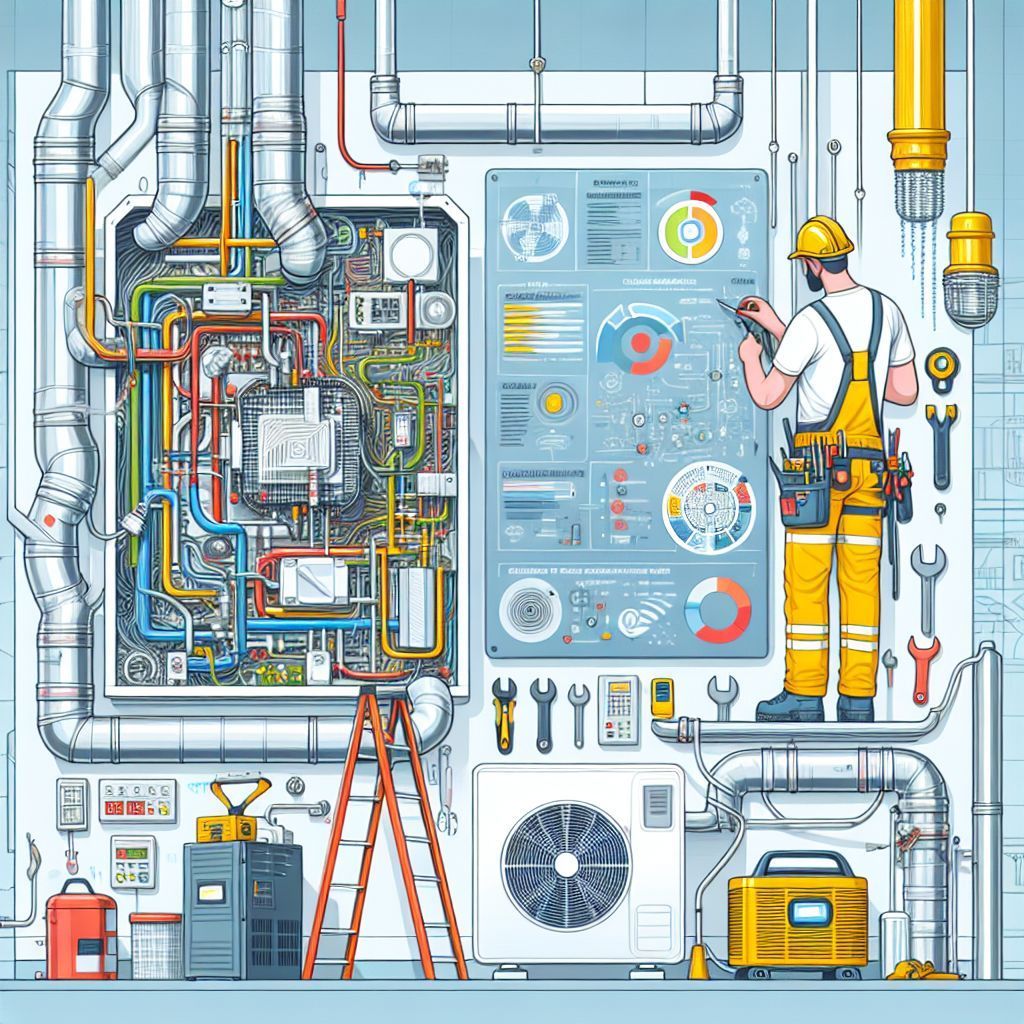
Orange County HVAC Google AI Overview Domination: 7 Proven Strategies to Capture Featured AI Results





